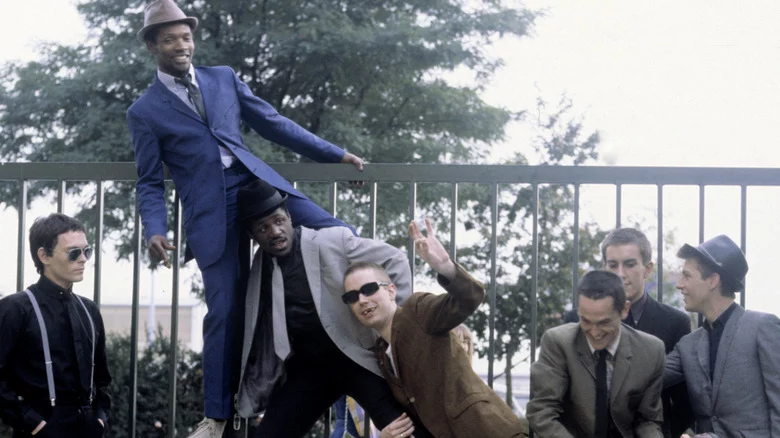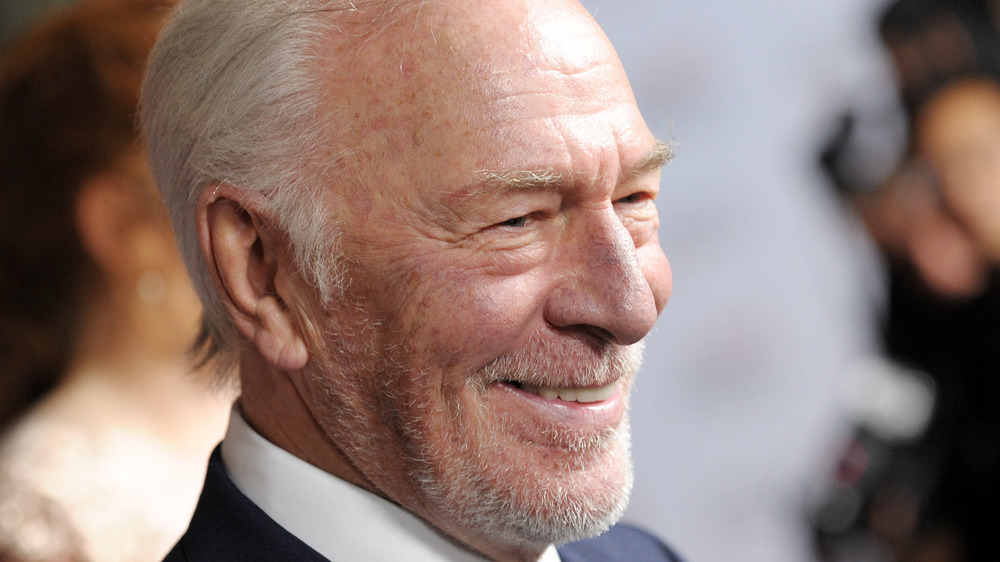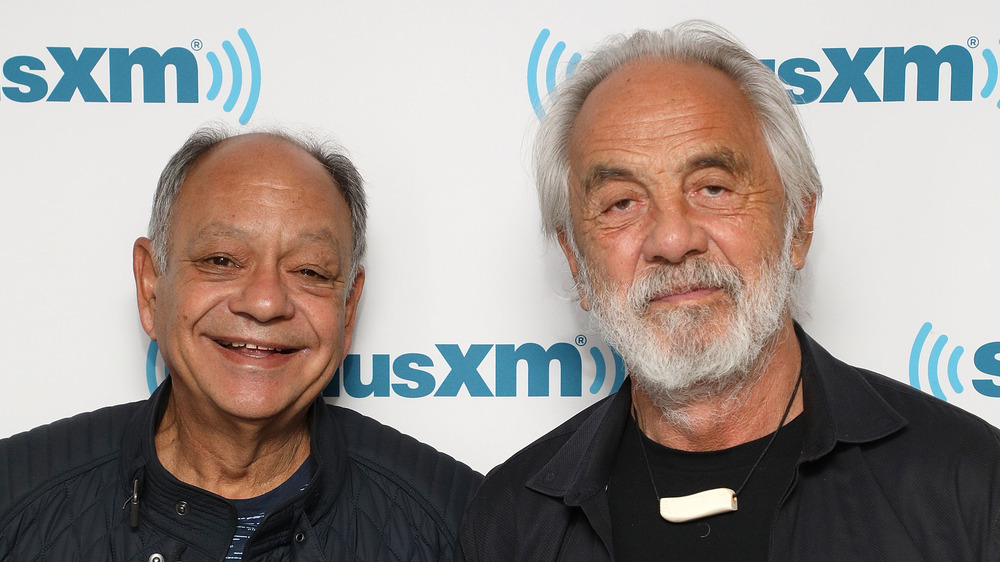
The Biggest Box Office Movie Flops Ever Made Part 2
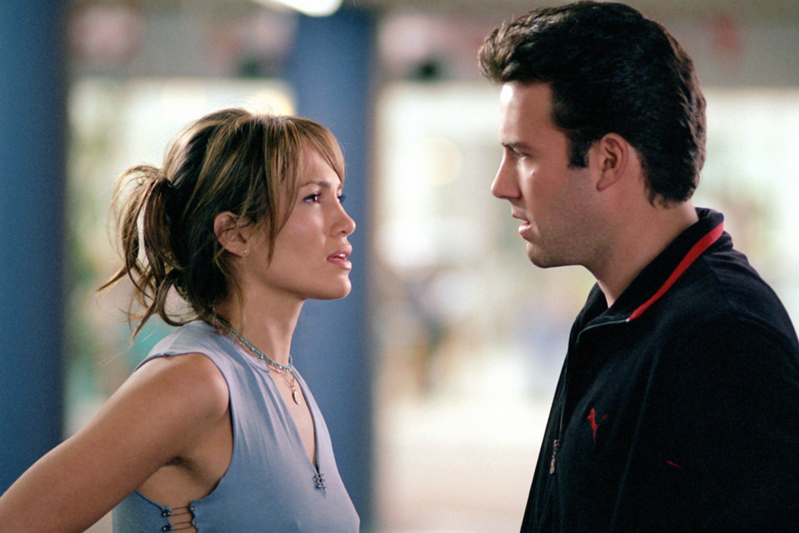
Well, we got word that you were still interested in titles you should avoid, and we are here to deliver! Enjoy this list of more films you probably shouldn’t put on your watch list.
Basic Instinct 2 (2006) — Estimated loss: $31.4 million
Now, “Basic Instinct” is just one of those films you don’t mess with. It’s iconic, sexy, and thrilling for a reason, and this is most likely due to the decade it was released in. Sure, they might have brought Sharon Stone back for the sequel and perhaps even her little white mini dress, but more than 20 years later, it just wasn’t the same. The film flopped at the box office, making only $38.6 million of the originally invested $70 million.

You know it’s Golden Raspberry-worthy when the director of the original film scoffed at the new script and flat-out refused to direct a film that was going to be somewhat sacrilegious. With reviews like “ludicrous” and “predictable”, it should’ve been instinctual to know not to resurrect a film from another time.
I Know Who Killed Me (2007) — Estimated loss: $2.3 million
Lindsay Lohan has starred in some of the most successful and well-known films in the last two decades or so. Apparently, she has some flops under her belt too. Starring Lindsay Lohan — this was after her career peak in the 90s and early 2000s — the film focuses on a student who is abducted and brutally tortured. After her ordeal, she assumes another identity.
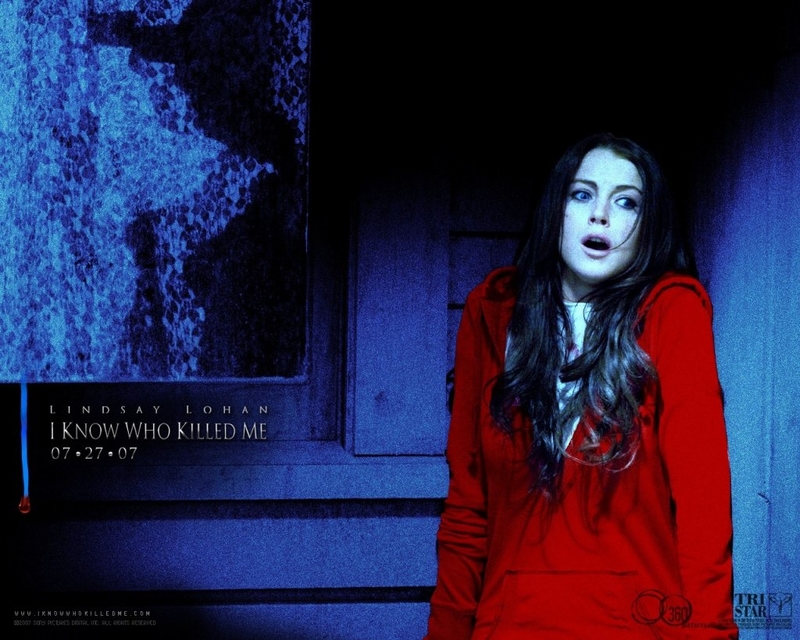
The film won Worst Picture, with Lohan herself picking up a few Razzies; among them Worst Actress and Worst Screen Couple. Not to mention, it lost a little over $2 million of the $12 million originally invested in it. Sometimes with child/teen stars, it’s better they make their money young, invest, and enjoy the funds.
Highlander II: The Quickening (1991) — Estimated loss: $18.4 million
The original 1986 “Highlander” was an iconic fantasy action-adventure film that helped turn Christophe Lambert into a worldwide star. The film also starred heavyweights such as Sean Connery and Clancy Brown. The film was initially panned by critics and received moderate financial success, but has since garnered a dedicated cult following. It also turned into a franchise and spawned several sequels, with the first, “Highlander II: The Quickening,” being considered one of the worst films of all time.
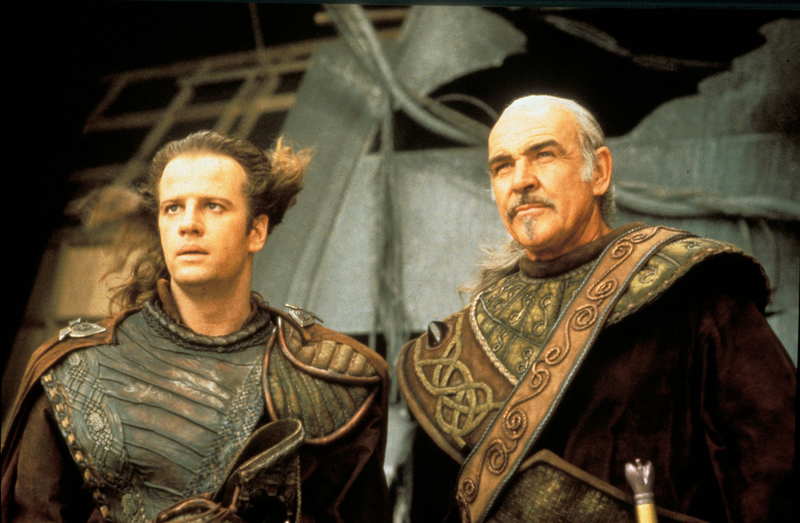
The sequel contained gaping plot holes and was panned by both fans and critics of the franchise. In fact, the film was so bad that it had multiple different versions of it released just to try and make up for the original release’s horrible editing. $34 million were invested into “Highlander II: The Quickening” and it only gained less than half of it back at the box office.
Precious Cargo (2016) — Estimated loss: $10 million
When unknown Canadian director, Max Adams, approached Bruce Willis to perform in his 2016 action film, “Precious Cargo,” Willis thought little about the matter and joined the production. The film was released on April 22, 2016, and was centered around Willis’ character convincing a crime group to steal $30 million in diamonds from another crime group, in exchange for a woman.
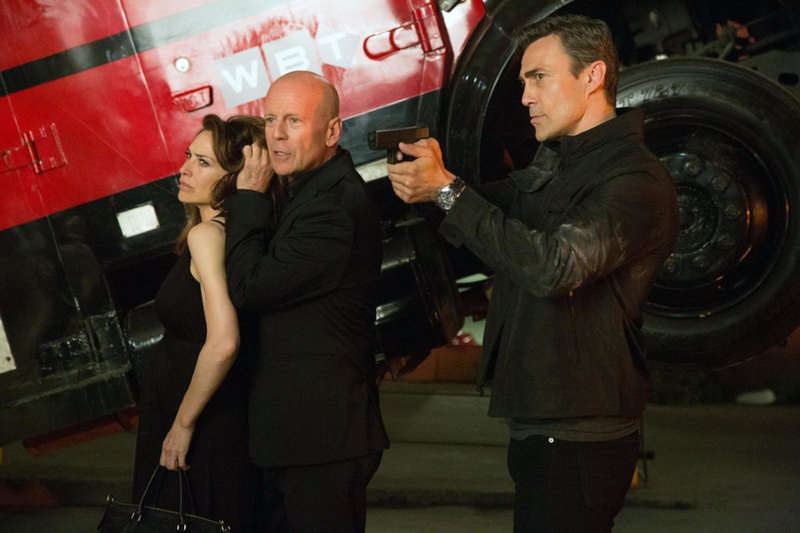
The film was heavily berated on Rotten Tomatoes, receiving a 0% rating. Critics called it a rip-off, a lazy and sloppy film, and even a contender for the blandest heist film of all time. One reviewer went as far as to call the movie “An absolute waste of time and an insult to action cinema.” That definitely explains how it only made about half a million dollars at the box office despite its budget of $10.5 million.
Megaforce (1982) — Estimated loss: $14.3 million
“Megaforce” was a 1982 passion project film made by American stuntman Hal Needham. Needham decided to try his luck as a director in the late ’70s and directed a total of twelve films in his decade of directorial career. He pitched the idea of the film to audiences, claiming it was “like no other movie ever made before”. The director also made sure to include himself as one of the film’s actors but was unfortunately hurt during production when he fell off a motorbike and broke several ribs.
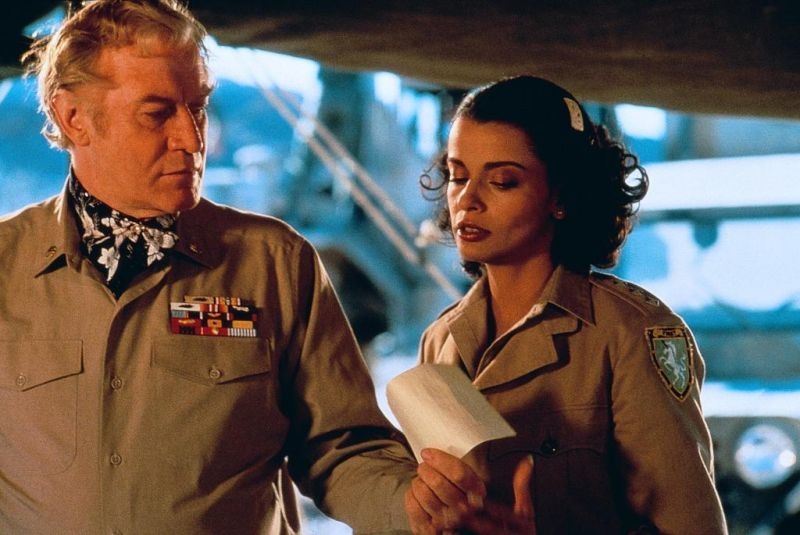
The film was released at around the same time as “Mad Max 2,” the sequel to the ultra-popular dystopian Mel Gibson movie. “Megaforce” had poor box-office performance and lost almost three-quarters of its budget due to low ticket sales. Interestingly, the director later admitted that he was completely wrong about what he believed audiences wanted at the time.
Look Who’s Talking Now (1993) — Estimated loss: $9.7 million
“Look Who’s Talking” is a romantic comedy featuring John Travolta and Kirstie Alley, with a voice-over from Bruce Willis as the child of Kirstie’s character. The film received mixed reviews but made an incredible amount of money at the box office. It managed to rake in almost $300 million against a relatively tiny budget of $7.5 million, making it one of the most profitable low-budget films of all time.
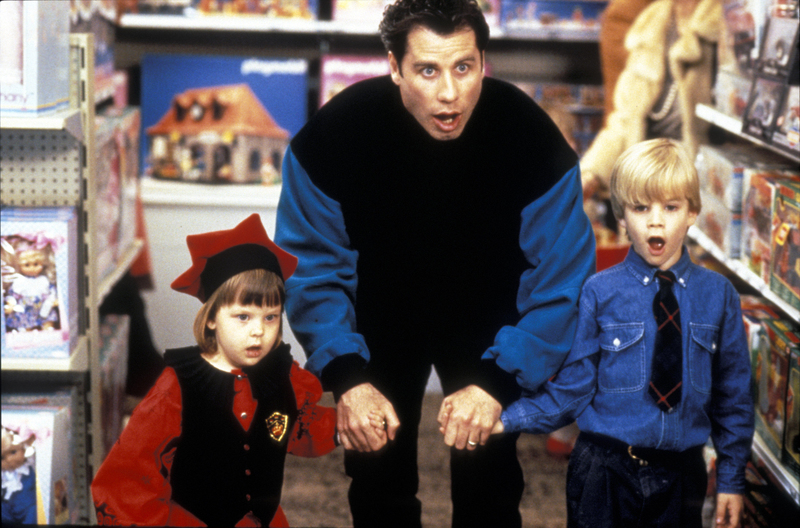
This sudden surprise of profitability obviously caused studios to try and capitalize on the success of the film, as it received a sequel, “Look Who’s Talking Too,” which made less than 15% of what the original made. The studio wanted to try one last time to make a sequel, with the third film being called “Look Who’s Talking Now.” The third movie was a box office disaster, losing more than $12 million due to low box office sales.
Surfer, Dude (2008) — Estimated loss: $5.5 million
Matthew McConaughey is known as one of Hollywood’s best actors. The star has the looks, the voice, and the charisma to carry him through almost any role. However, with the horrible premise and material he had to work with when acting in “Surfer, Dude,” it seems that even McConaughey couldn’t live up to the challenge. This 2008 comedy film centers around a soul-searching surfer who experiences an existential crisis when there are no waves on the beach for over a month.

The film also stars Woody Harrelson, who’s also a highly respected Hollywood actor. The two joked about the film being one of their easiest jobs of all time. “Surfer, Dude” ended up making just over $50,000 against a budget of more than $6 million, certifying it a true flop.
Baby Geniuses and Superbabies: Baby Geniuses 2 (2004) — Estimated loss: $1.1 million
“Baby Geniuses” was a 1999 comedy film about a bunch of babies that are, you guessed it, extremely smart. While most people would agree that it’s hard to ruin a film about cute babies, the studio behind “Baby Geniuses” managed to do just that. The film received overwhelmingly negative reviews, but despite the poor ratings, the film managed to make a decent amount of money, a $36.5 million box office income.

The success of the original “Baby Geniuses” prompted the studios to make a sequel, “Superbabies: Baby Geniuses 2.” The sequel also ended up being considered one of the worst films of all time. Fortunately, this one was a box-office failure. It only made $9.4 million against a $20 million budget, which meant that the string of horrible films had come to an end.
The Room (2003) — Estimated loss: $5.9 million
Some of you might not need an introduction to “The Room”. It’s widely considered to be the worst film ever made, full of convoluted plotlines, incredibly bad editing, horrible music, and some of the worst acting displays you’ve ever seen. While many believed that “The Room” was a parody, it was actually a completely serious film made by and starring the mysterious Tommy Wiseau.
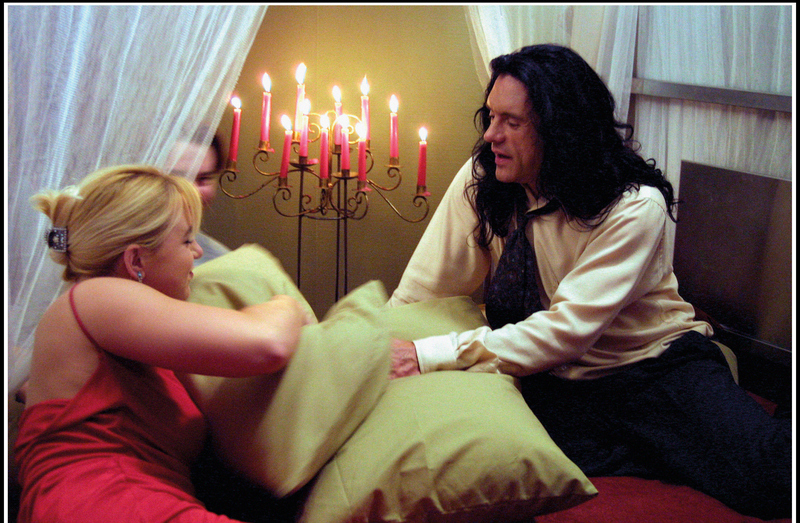
The film is so bad it sort of circles back to being good. The initial box office opening raked in less than $ 2,000 against a $6 million budget. Later, however, the film has gained a cult following since its abysmal release and is now one of the most popular bad films of all time. Many theaters in the United States have an annual theatrical showing of the film, and it’s always sold out with roaring and laughing fans.
Mac and Me (1988) — Estimated loss: $6.6 million
1988’s “Mac and Me” was just such a film, as it attempted to copy the success of 1982’s masterpiece, “E.T. the Extra-Terrestrial,” by director Steven Spielberg. The film was littered with product placements for McDonald’s and Coca-Cola, which made it even worse than it already was.
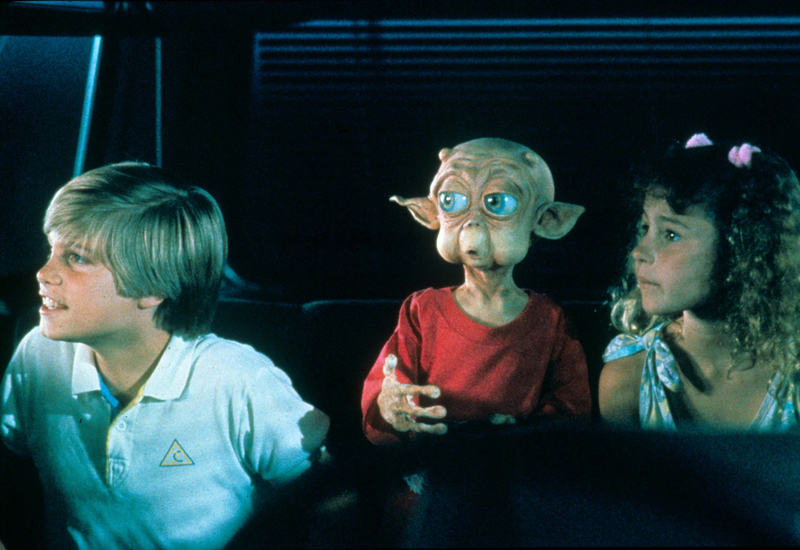
“Mac and Me” was a box-office flop, and reportedly lost a few million dollars after being released. It’s considered one of the worst films to ever have been made. The film actually won a few awards, including Worst Director and Worst New Star. It was actually so bad that it built a cult following over the years, which just goes to show that people will watch anything if it’s bad enough.
A Thousand Words (2012) — Estimated loss: $18 million
Eddie Murphy’s comedy film, “A Thousand Words,” had quite a unique premise. It featured an incredibly selfish literary agent who uses his ability to manipulate people to get what he wants, in both his terrible career and dysfunctional relationship. The idea behind the film is that the protagonist gets cursed and is left with only 1,000 words to speak before he dies. The film was caught in various delays and near-cancellations due to troubles with the movie’s production company.

Critics hated “A Thousand Words” for taking away Eddie Murphy’s voice, which is arguably his greatest comedic asset. The film also lost about half its budget, making only slightly more than $20 million against a budget of $40 million. “A Thousand Words” was also nominated for three Golden Raspberries, but failed to win any one of them.
Bucky Larson: Born To Be A Star (2011) — Estimated loss: $7.5 million
One of the truly most awful comedy films ever made is, without a doubt, “Bucky Larson: Born to Be a Star.” The film was directed by Tom Brady, who is responsible for various films starring popular comedy actor, Rob Schneider. The film was released just two days before the annual 9/11 memorial day. It was viscerally hated by most critics and moviegoers.

It’s described by many critics as one of the most boring, awkward, and humorless comedy films ever made. The film was co-produced by Adam Sandler, which is a huge stain on his resume. Its main “star” (if you could call him that) is Nick Swardson. The actor defended “Bucky Larson: Born to Be a Star,” claiming that he thinks journalists and film critics are just “negative morons” and attributed that as the reason the film received such low ratings and lost millions of dollars.
Dark Tide (2012) — Estimated loss: $23.9 million
Halle Berry has had mixed success over the years when it comes to her acting. Still, she usually manages to grab at least a moderate amount of commercial success in most of her projects. 2012’s action thriller, “Dark Tide,” was perhaps the first example of her charm getting pulled from under her feet.

The movie tells the story of a shark expert, played by Berry, who agrees to take a thrill-seeking millionaire and his teenage son on a dangerous shark dive due to her poor financial situation. Dark Tide made a sad $432,000 during its run at the box office against a $25 million budget, so there’s a good chance that the star actress literally got paid more than the film even grossed. It was ironically summarized as a “shallow” film that’s best skipped by audiences.
Atlas Shrugged III: Who Is John Galt (2014) — Estimated loss: $4.1 million
Ayn Rand was the author of one of the world’s most popular books, “Atlas Shrugged.” The book allegedly sold as many copies as the bible and remains one of the most successful books of all time in the United States. A three-part film series was made based on “Atlas Shrugged,” mostly by conservative actors who wanted to voice support and promote her ideology and fiction.

The first and second parts were relatively well-received but suffered from a constantly changing cast and varying levels of acting and editing. The third part, however, was an absolute disaster and was universally considered as one of the worst films of all time. It bombed at the box office, losing $4.1 million, and was nominated for the Worst Prequel, Remake, Rip-off, or Sequel award at the 35th Golden Raspberry Awards.
Gotti (2018) — Estimated loss: $3.9 million
Some of the best films out there have been crime drama films that center around a mob family. “The Godfather,” “Goodfellas,” and “The Sopranos” are just the tip of the iceberg. John Travolta also tried his luck in playing the notorious Italian-American criminal, John Gotti. Unfortunately for him, Travolta’s portrayal of the man is so bad it tortured us, the audience, more than anyone else in the movie.
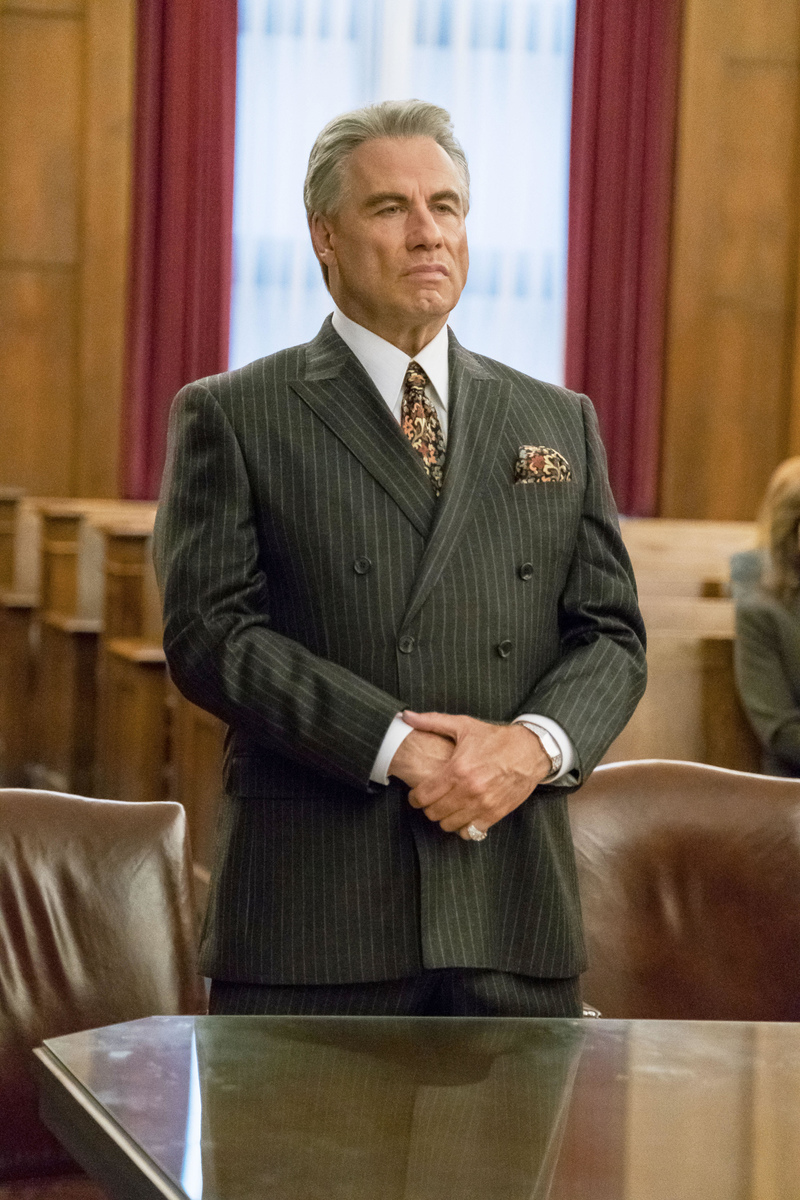
Gotti was a commercial failure and ended up losing several million dollars. It’s one of the only films to ever get a 0% rating on Rotten Tomatoes. There was a strong disparity initially between critic reviews and user reviews, with regular viewers giving the film an 80% rating. It’s widely speculated that this was the doing of thousands of Scientologists, who are fans and fellow members in the Church of Scientology with John Travolta.
American Anthem (1986) — Estimated loss: $2.2 million
You’d think that a sports drama film would make a decent amount of money, or at least get average reviews and ratings, but this was not the case with “American Anthem.” The film starred Janet Jones, wife of the legendary Hall of Fame ice hockey player, Wayne Gretzky. It also stars the Olympic gymnast and gold medalist, Mitchell Gaylord. Critics called it the worst film of 1986.

American Anthem lost a few million dollars in the box office, and currently holds a 0% rating on Rotten Tomatoes. Audiences have been far more favorable of this film and bestowed it with a 65% rating based on over 1,300 user reviews. Gaylord himself went on to have an excellent sports career and was named the seventh-best US gymnast of all time in 2007. It seems that he learned his lesson, as he never appeared in a Hollywood film again.
Deadfall (1993) — Estimated loss: $9.9 million
“Deadfall” starred Michael Biehn, Charlie Sheen, James Coburn, and Peter Fonda. Its true main star, though, is none other than Nicolas Cage. Cage appeared in a few highly successful films but his career is mired with some of the worst, most unintentionally hilarious films of all time.
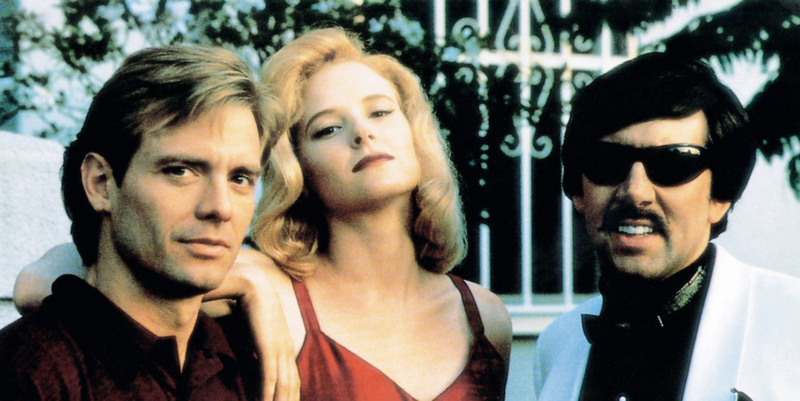
Nicolas Cage took the role of Eddie King in 1993’s “Deadfall,” a role which would proceed to be mocked for decades to come. The film was one of the worst box-office failures of all time, making a measly $18,369 against a whopping $10 million budget. It holds a 0% rating on Rotten Tomatoes and was described by film critic, Kevin Thomas as “a hopelessly callow, leaden-paced attempt at film noir.” Warning — Nicolas Cage swears more in this film than in all his other roles combined.
Stratton (2018) — Estimated loss: $16-19 million
It’s hard to believe that a film that came out in 2018 with a budget of just under $20 million can be so bad. This is exactly what happened with Simon West’s British action thriller, “Stratton,” a film based on the novel by the same name. The movie is very similar in plot to “Mission: Impossible.” Our hero is a tough-boy British Special Boat Operative, who gets betrayed by a friend and suspects a mole, then goes out to save the world.

“Stratton” had one of the worst box office bombs in recent years, earning less than $100,000 worldwide against a budget of almost $20 million. The film basically ticks all the boxes that you’d expect from your average action flick, then fails to deliver on all of them.
House of the Dead (2003) — Estimated gross: $1.8 million
German film director, Uwe Boll, is known as one of the worst and most hated directors of all time. He is single-handedly responsible for giving video-game films a bad name by making some of the worst video-game movie adaptations ever. “The House of the Dead” was a popular, on-rails zombie shooting video game that was pretty prominent in Arcades. Fans were initially ecstatic about the film adaptation until they found out that the director was going to be Uwe Boll himself.
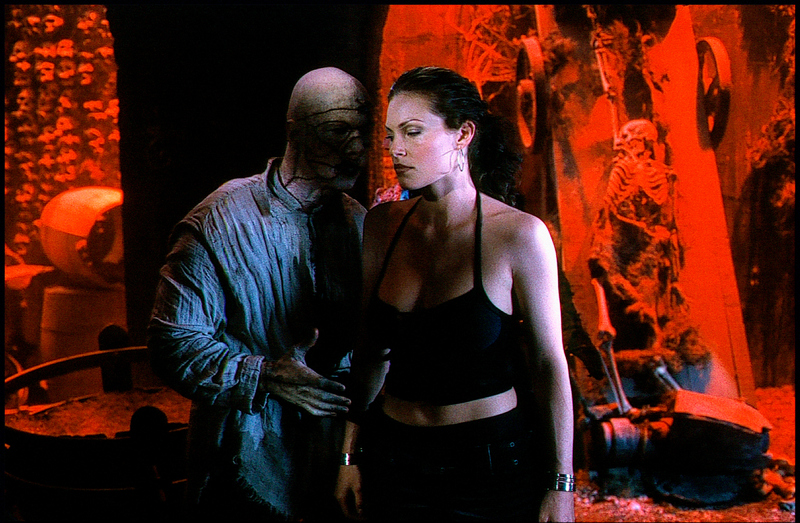
“The House of the Dead” was ranked the 41st worst film of the 2000s and was overwhelmingly hated by fans just as much as critics. Uwe Boll’s business model does work, though, as these bad films have both the popularity of the video games they’re based on, and the media attention from just how bad they are. Too bad it resulted in a box office flop.
Battlefield Earth: A Saga of the Year 3000 (2000) — Estimated loss: $14.3 million
This movie is definitely Travolta’s worst film of his entire acting career. The guy with the long braids that you can see on the right is none other than Travolta, who plays an alien in the convoluted sci-fi film, “Battlefield Earth: A Saga of the Year 3000.” The movie is based on the novel of the same name by L. Ron Hubbard — the creator and leader of the Church of Scientology.
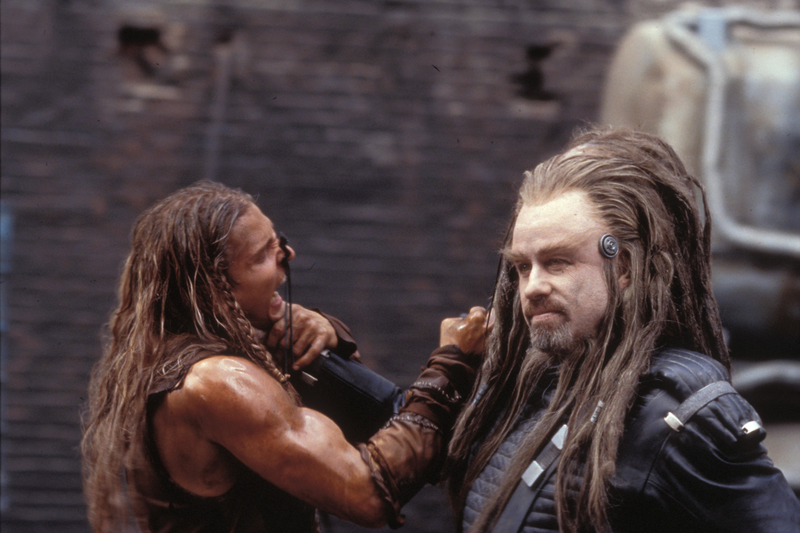
“Battlefield Earth: A Saga of the Year 3000” was an absolute mess of a film. Travolta starred in the film as a tribute to Hubbard, due to the actor being a long-time Scientologist. The film received lost $14.3 million and got a 3% rating on Rotten Tomatoes. The critical consensus called it: “Ugly, campy, and poorly acted, Battlefield Earth is a stunningly misguided, aggressively bad sci-fi folly.”
Gigli (2003) — Estimated loss: $72 million
We couldn’t possibly make a list of the biggest box office bombs without mentioning good ol’ “Gigli.” Since its release, “Gigli,” has topped the lists of worst films of ALL times, and there are no excuses here. It’s simply a bad movie. Its production cost was $75.6 million but it grossed a subpar $7.3 million. The criticism of the movie was brutal, to say the least. The movie’s title even became synonymous with failure — comedian Conan O’Brien once said “The Mets are doing so badly that they will be renamed ‘The New York Gigli.”

Soon after the movie’s release, its lead actors, Jennifer Lopez and Ben Affleck, who had been involved romantically in real life, called it quits. Perhaps they figured that it was best they no longer be involved with one another, professionally or privately, for both of their career’s sake.
Annihilation (2018) — Estimated loss: $12 million
“Annihilation” ‘as one of the biggest box-office bombs of 2018. It was quite a pity because it was by no means a bad film. It had a fine cast, a thought-provoking premise, and received positive reviews. But it also never had a chance. Moviegoers had much rather spend their free time and hard-earned money on a theatrical experience like “Black Panther,” or to unwind with a fun movie like “Game Night,” which were both out at the same time.

This sci-fi horror film follows the story of a group of female military scientists who enter “The Shimmer” — a mystifying quarantined zone of mutating animals and landscapes. Reportedly, Paramount deemed the film “too intellectual” for mainstream crowds after its first test screening, thus they made an international distribution deal with Netflix. As predicted, after it flopped at the box office stateside, the movie never even came out in theaters overseas.
Conan the Barbarian (2011) — Estimated loss: $60-66 million
“Conan the Barbarian,” a remake of the 1982 cult film of a fictional hero, combined both concepts moviegoers, had grown sick of. Another problem was that while Jason Momoa, who played the lead. While he had the physique to match that of Arnold Schwarzenegger’s original 1982 portrayal, it was as if he was walking with muddy boots on holy grounds. Schwarzenegger, along with the thick Austrian he still had back then, had become synonymous with the role, and Momoa’s portrayal of Conan was nothing less than blasphemous to the fans of the 1982 classic.

Thanks to the Russians, who are usually big fans of sword and sandal films, they were able to scrap up nearly $10 million, which was their highest overseas gross. As for everyone else, this movie passed them by, and producers said bye-bye to over $60 million.
Battleship (2012) — Estimated loss: $220.4 million
Universal strangely agreed to produce a movie based on the childhood-favorite Hasbro board game — Battleship. The songstress Rihanna, who made her acting debut in the film, was the most familiar face featured, but she alone wasn’t enough to attract moviegoers.

As if “Battleship” hadn’t received enough negative criticism, the film about an alien invasion that was halted by the U.S. Navy was called one of the worst Naval war films ever. Fans and Men in Uniform alike, felt as though the film made a mockery of how the military really functions. Ultimately, the film was a bit too “dumbed down” to appeal to the adult audience it desperately needed to help fill theater seats. Perhaps this will make screenplay producers hesitate when the next screenplay-writer comes to them with a “brilliant” idea of a movie based on Monopoly.
Green Lantern (2011) — Estimated loss: $98 million
Before he solidified his character as the bad-boy Marvel superhero, Deadpool, Ryan Reynolds portrayed the DC Comics superhero, Green Lantern. He starred along with some other big A-list actors such as Angela Bassett, Peter Sarsgaard, Mark Strong, and his wife (whom he met on-set), Blake Lively.
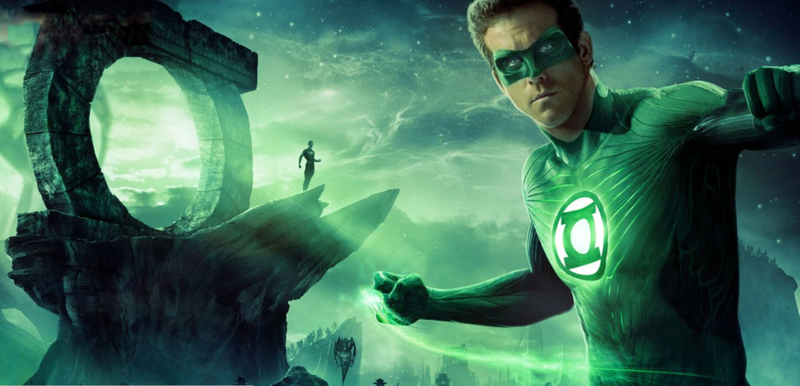
Released in the summer of 2011, “Green Lantern” received generally negative reviews for its inconsistent tone, its portrayal of villains, and its mediocre use of CGI. Its execution was just poor. The project’s production budget was a generous $230 million, but after its underperformance at the box office, it grossed only $219 million worldwide. Accounting for the production costs, which included costly 3D conversion, and marketing expenses, it cost Warner Bros. a painful $98 million. Consequently, any plans for a sequel were canceled.
Solo: A Star Wars Story (2018) — Estimated loss: $100 million
This space Western film is based on one of “Star Wars” favorite characters, Han Solo. As it’s associated with one of the most successful movie franchises in cinema history, expectations were high; however, the production didn’t exactly deliver, thus it gets an “honorable mention” in our list.

Reviews about this Star Wars spin-off were tepid. Analysts of publications such as The Atlantic and Entertainment Weekly credited the movie’s deficient box office performance to inadequate marketing and to what was coined as “Star Wars fatigue”. “Solo” came out just five months after “The Last Jedi,” becoming the fourth film of the series released in less than 30 months. Perhaps viewers just needed a break from the Star Wars saga.
The Fall of the Roman Empire (1964) — Estimated loss: $14 million
Featuring epic performances of Hollywood legends such as Christopher Plummer, Alec Guinness, and the crowds-favorite, Sophia Loren, today the film is considered to be one of the best “sword-and-sandal” movies of all times. It also broke records, with a 92,000 m2 replica of the Roman Forum, it was the largest outdoor film set in the history of the film industry.
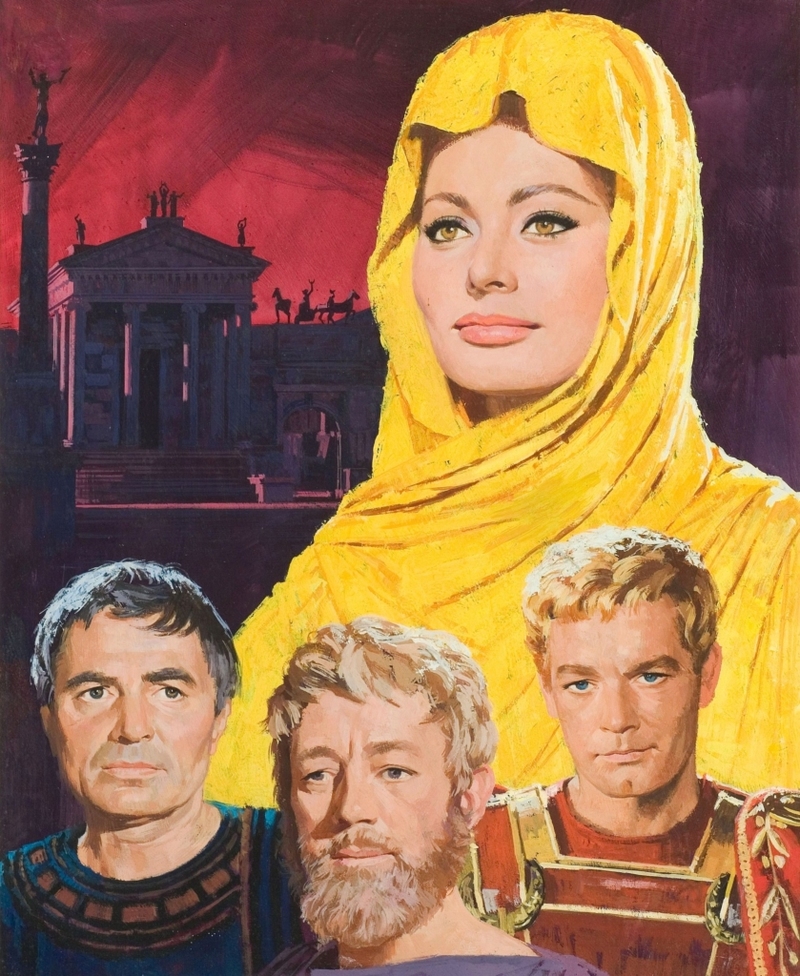
Despite all the accolades for the film’s script, direction, and acting, its box office performance fell disappointingly short. It wasn’t nearly enough to cover the costs of its extravagant state-of-the-art production, not to mention the additional marketing costs. When adjusted for inflation, the film lost a brutal $126 million. As the case with other now-famous films, even with the biggest names in the game, and the most renowned directors and producers, huge production costs can absolutely put a damper on a movie’s box office success.
The Happytime Murders (2018) — Estimated loss: $12.5 million
Initially pitched as”Who Framed Roger Rabbit but with puppets instead of cartoons,” “The Happytime Murders” sounded like it had solid potential. After all, Roger Rabbit was a blockbuster hit. Unfortunately, when it debuted, stateside viewers were not impressed, and its acceptance overseas was just as calamitous.
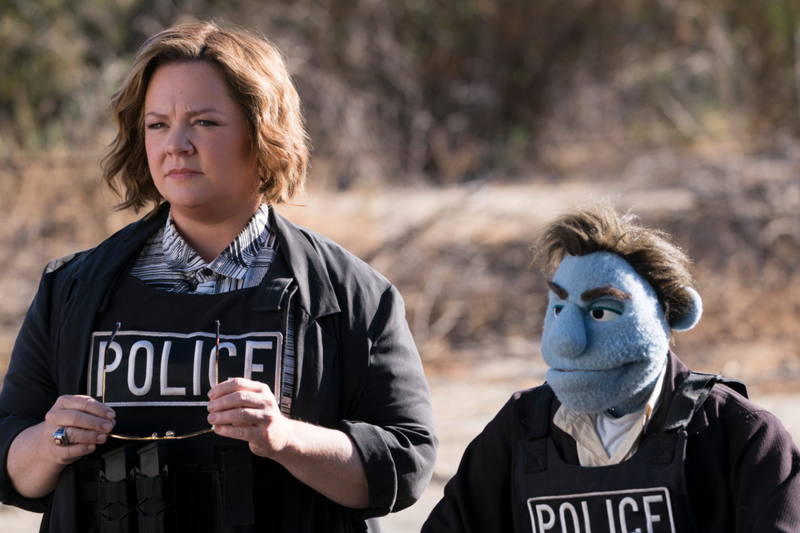
The film was a bit controversial from its beginning. When the first trailer was released critics believed the film’s vulgar humor to be unnecessary, and at times, forced. The production was even involved in a law-suite. Sesame Workshop, the company behind “Sesame Street”, sued them for potentially harming their innocent, child-friendly brand. The film received 6 Golden Raspberry Awards nominations, including Worst Picture and Worst Actress for McCarthy. So much for the wishful “Who Framed Roger Rabbit” success. Watching Muppets behave very R-rated was quite impressive from a technical standpoint, but apparently, the movie as a whole was not.
Heaven’s Gate (1980) — Estimated loss: $40.5 million
This western, loosely based on the Johnson County War, was such a disaster that it changed the movie-making industry forever, and Michael Cimino’s directing career would never completely recover. When adjusted for inflation, the film lost approximately $123 million at the box office. Cimino had such an expensive and ambitious vision, that he pushed production costs to nearly four times over its initial budget.
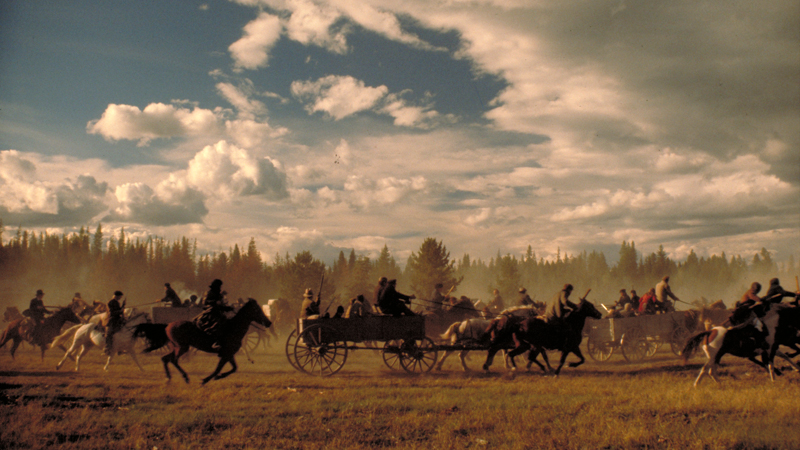
“Heaven’s Gate” heavy financial loss literally drove United Artists, a major American studio at the time, to bankruptcy. When it comes to cinema history, the Heaven’s Gate “disaster” often represents the key event that eventually led American film-making away from director-driven projects, putting an end to their free-wheeling excesses. Studios began to take more control over films, as they still do today.
Death Wish (2018) — Estimated gross: $4 million
This reboot of the original 1974 “Death Wish” joins the list of failed remakes. What worked during the Nixon/law-and-order era, doesn’t appeal to the general audience today, and thankfully so! Not that the first film was a masterpiece either. If most people would revisit it today, they’d most likely be appalled by the outright racism and the laughable machismo promoted in the film.
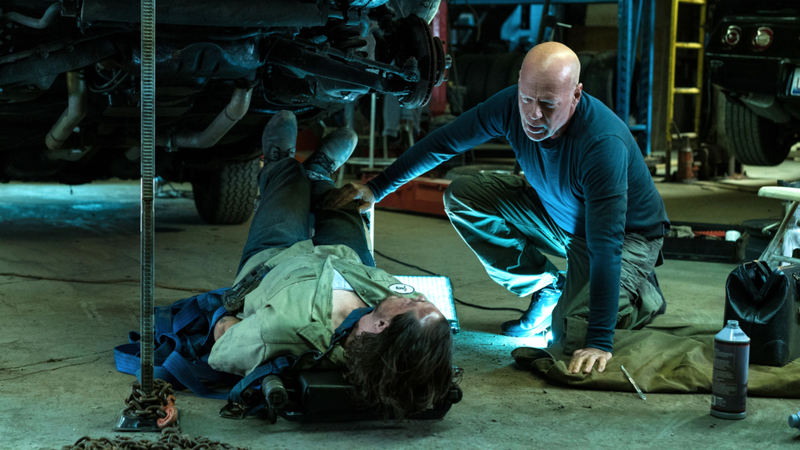
The movie grossed $34 million on a $30 million budget, so while that’s not as big of a loss compared to other box office bombs featured on this list, anyone familiar with the movie industry knows that a $4 million dollar gain is basically a fail, and thus “Death Wish” was granted the title of one of the biggest flops of 2018 by all major publications.
Alexander (2004) — Estimated loss: $ 71 million
“Alexander” was a 3-hour film made of flashes of half-baked ideas sewn together, riding on the hope that viewers would be thrilled to see a bleached blond Colin Farrell, who depicted Alexander The Great, and Angelina Jolie, who played his mother, together on the big screen. If anything, the general public found this to be one of the most ridiculous things about the film, besides the historical inaccuracies. Farrel was mocked for his golden locks, while Jolie fans couldn’t ignore the fact that she was cast as the mother of someone only one year younger than her. Nothing about the movie was convincing or informative.
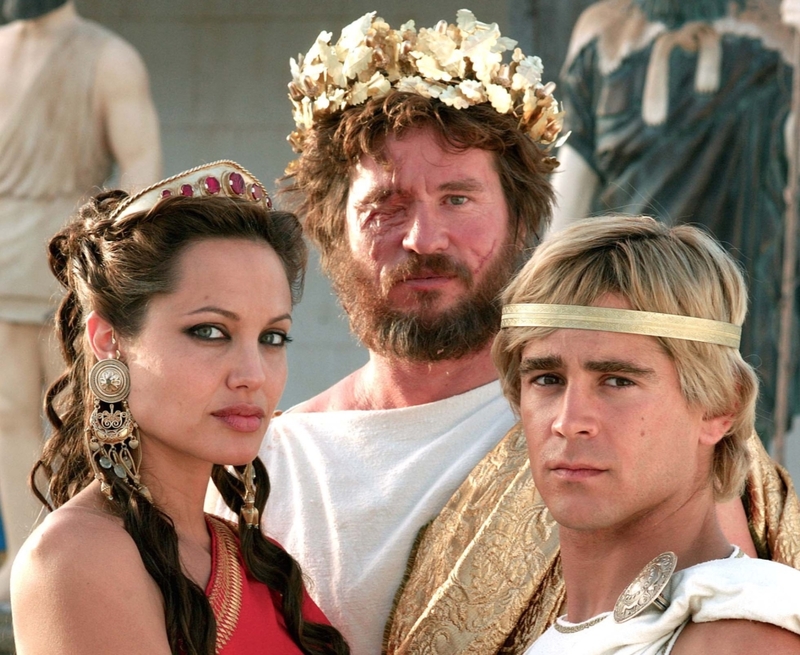
If matters weren’t confusing enough, Colin Farrell’s Irish accent, along with the several other dialects of his castmates left viewers wondering what era was being depicted. “Alexander” received 6 Raspberry Award nominations including Worst Actors- for Colin and Jolie, Worst Director, and Worst Picture.
Ben-Hur (2016) — Estimated loss: $75-121.7 million
Forbes referred to this film as “the summer’s most predictable miss/catastrophe”. Apparently, there weren’t high hopes for this movie from the get-go, so its performance wasn’t exactly surprising. The 2016 remake of Ben-Hur received generally negative reviews from all major movie critics. In fact, the only “accolades” it received included a Yoga Award, and an EDA Special Mention Award for “Sequel or Remake That Shouldn’t Have Been Made” and “Worst Remake”, respectively.
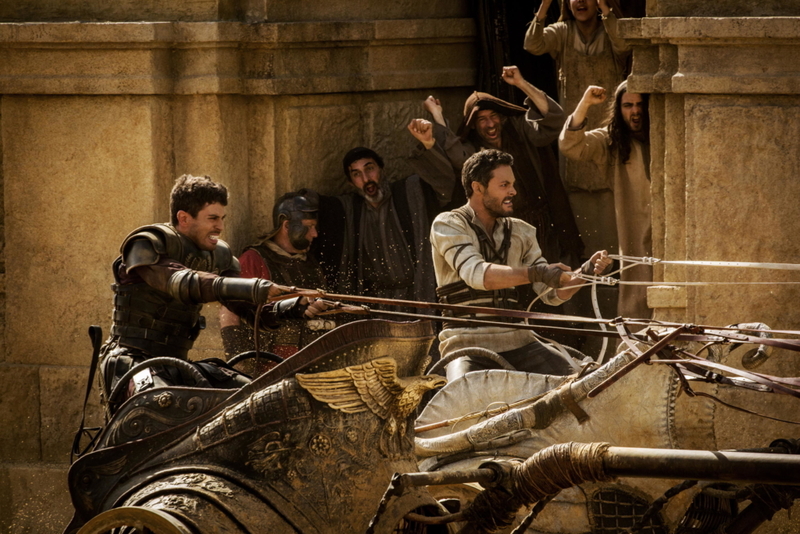
The film failed to attract the religious audience, the young audience, or any audience for that matter. It was listed by many publications as one of the biggest box office bombs of summer 2016, and one of the biggest flops of that year. The 1959’s Ben-Hur was an Oscar-winning smash, and remains beloved ’til this day, especially because the modern redo was so poorly executed.
Cowboys & Aliens (2011) — Estimated loss: $63-$75 million
“Cowboys & Aliens” was a project that went through several adaptations throughout its 14(!) years of development, but ultimately, it turned out to be a waste of money and creative efforts. On the day the movie premiered, it came second place to “The Smurfs.” This was considered a surprise because, with headliners like Harrison Ford and Daniel Craig, “Cowboys & Aliens” was expected to be the big winner that weekend.
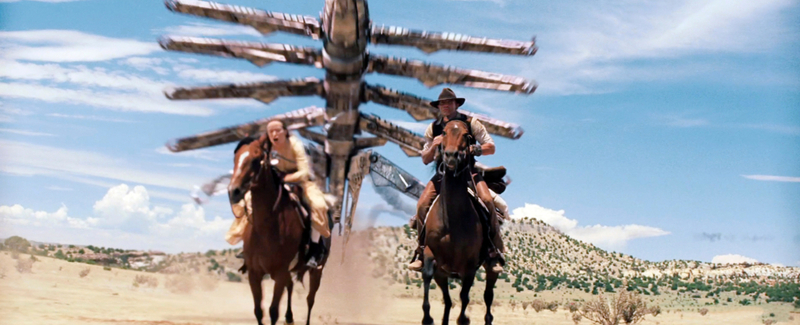
The president of Universal Pictures, Ron Meyer, said “Certainly you couldn’t have more talented people involved in Cowboys and Aliens, but it took, you know, ten smart and talented people to come up with a mediocre movie. It just happens.” Evidently, neither James Bond nor Indiana Jones could rescue the film. In 2014, the Los Angeles Times listed Cowboys & Aliens among “The Most Expensive Box Office Flops Of All Time”.
Beloved (1998) — Estimated loss: $68.5 million
On Paper, this movie, based on Toni Morrison’s Pulitzer Prize-winning novel; looked more promising than a Martha Stewart recipe. Some of the biggest names in Hollywood were on its headlines. Jonathan Demme (Silence of the Lambs) was the director, and the cast included Thandie Newton, Kimberly Elise, Beah Richards, and even Oprah Winfrey. The story was about a former slave who was haunted by the ghost of her daughter, whom she murdered, in an attempt to “rescue” her from a slave owner.
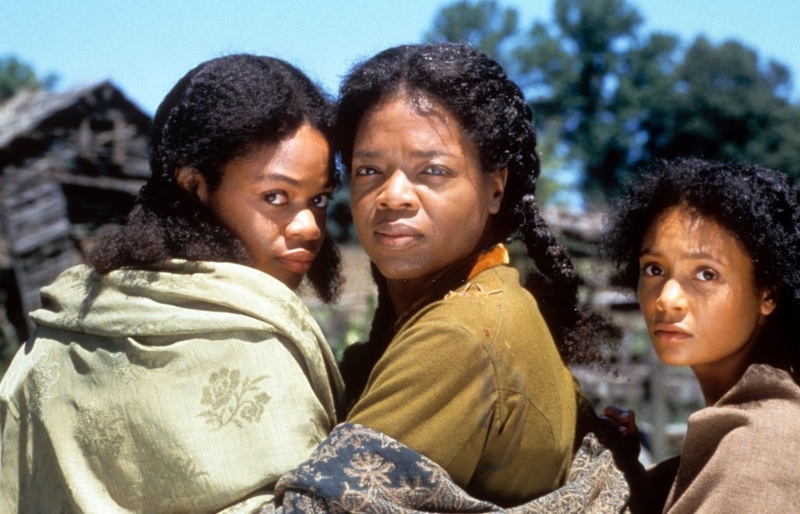
Oprah Winfrey once recalled getting the disappointing phone call of the movie’s underwhelming opening day, saying the film was beaten by the horror flick “Chucky.” The acting was phenomenal and was acknowledged, as the leads received high praise for their performances. But most viewers apparently, found the story to be a bit punishing. Maybe the timing wasn’t right for such a film to be accepted.
Ali (2001) — Estimated loss: $63 million
“Ali” is a biopic that depicts the life of Cassius Clay, most famously known as Muhammad Ali. The movie was nothing short of promising. So who was to blame for its inadequate box office gross? Well, fingers were definitely pointed at director Michael Mann, who said that he couldn’t manage to make the film on its original $107 million production budget, which was already considered expensive. By the end of its production, the costs rose up to $118 million.
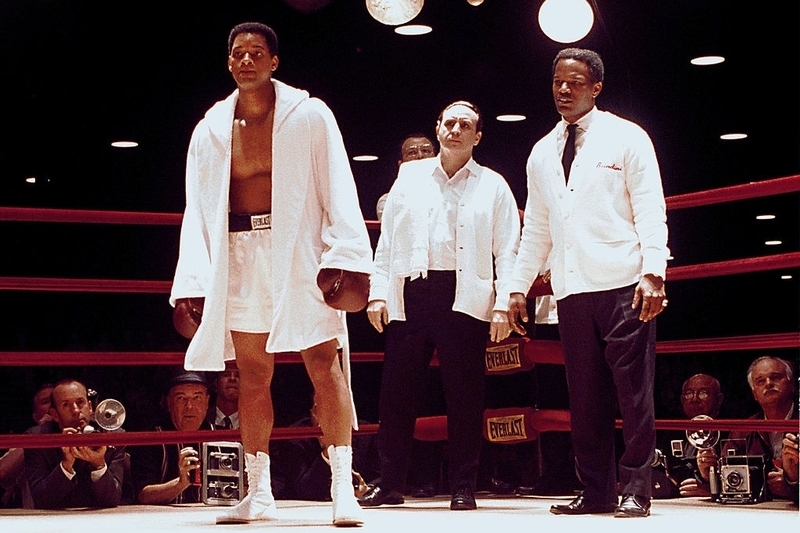
Unlike most of the movies on this list, “Ali” isn’t a bad movie by any means, on the contrary. Will Smith, who played Ali, was nominated for several awards for his outstanding performance, including an Academy Award and a Golden Globe for Best Actor. Supporting actors, like Jamies Foxx and Jon Voight, were also acclaimed for their exceptional execution. Nonetheless, it didn’t manage to compensate for its insane production budget.
Zoolander 2 (2016) — Estimated loss: $20 million
While the original “Zoolander” does have somewhat of a cult following, it grossed a mere $60 million on a $30 million budget. Needless to say, it wasn’t exactly a smash-hit. Historically speaking, that’s usually not promising unless the film falls somewhere on the popularity scale between “Star Wars” and “Harry Potter.” All that being said, for some odd reason, this didn’t prevent its producers from making a sequel to the film 15 years later.

Its cult following wasn’t enough to make it a box office success. In line with what most movie critics predicted, it was a huge flop. On popular movie rating sites such as IMDb, it scored a weak 4.7/10. Paramount surely regrets backtracking from their original verdict of rejecting the project. Hopefully, they’ve learned from their error, and let the Zoolander franchise R.I.P. once and for all.
The 13th Warrior (1999) — Estimated loss: $129 million
They say that the book is always better than the movie, well, that surely was the case with this film. “The 13th Warrior,” a film inspired by the best-selling novel, “Eaters of the Dead”, ultimately became recognized as one of the biggest movie flops in the history of the industry. The film performed quite poorly at the box office, earning an estimated $61.7 million. With an extravagant budget of $160 million, it lost as much as $190 million, when adjusted for inflation. No profit here.
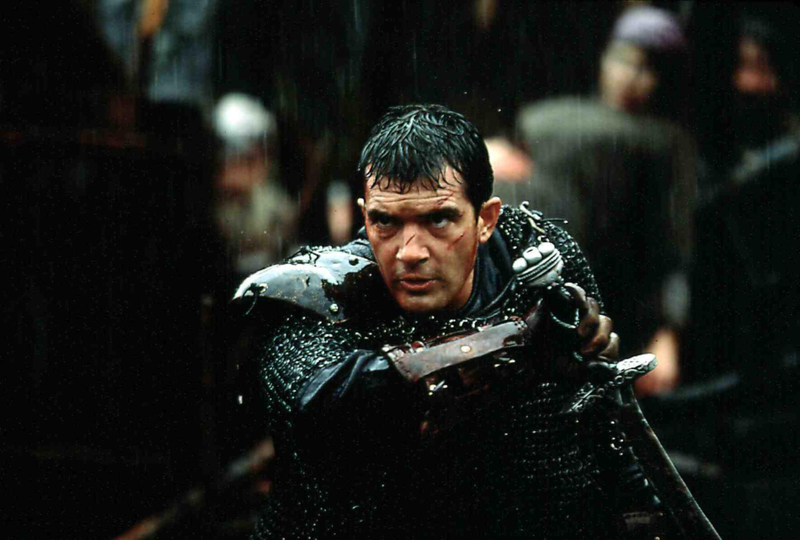
Perhaps its creators should have seen the omens, as the film’s production was anything but smooth sailing — the title changes, re-edits, and re-cuts weren’t enough to make this movie as successful as they envisioned. The movie’s failure was so disheartening to one of its actors, Omar Sharif, that it caused him to go on a 3-year-long career hiatus.
Ghostbusters: Answer the Call (2016) — Estimated loss: $75 million
The original “Ghostbusters,” which was released in 1984, was No. 1 at the box office for 7 weeks straight! It launched a hit song, a sequel, an iconic cartoon, and even its own holiday. The 2016 reboot had some extremely large shoes to fill, and evidently, it could not. The studio estimated that the movie would need to gross, at least, $300 million to break even on the investment. In the end; however, Sony suffered a grim $75 million loss.

The cast included Melissa McCarthy, Kristen Wiig, Leslie Jones, Kate McKinnon, and Chris Hemsworth, but even they weren’t able to retrieve as much as half of the impact that the classic movie had. One take on the movie’s less-than-ideal reception was the fact that the new, female-led installment wasn’t exactly appealing to men, and apparently, there wasn’t a strong enough female following to fill up the theaters.
The Wizard of Oz (1939) — Estimated loss: $1.1 million
This one may be the most surprising movie featured on this list, as it’s now arguably one of the greatest films in cinema history. But when “The Wizard of Oz” made its debut, it was far from the box office hit you’d expect it to be. Naturally, this was quite disappointing to MGM, as it was their most expensive production at the time.
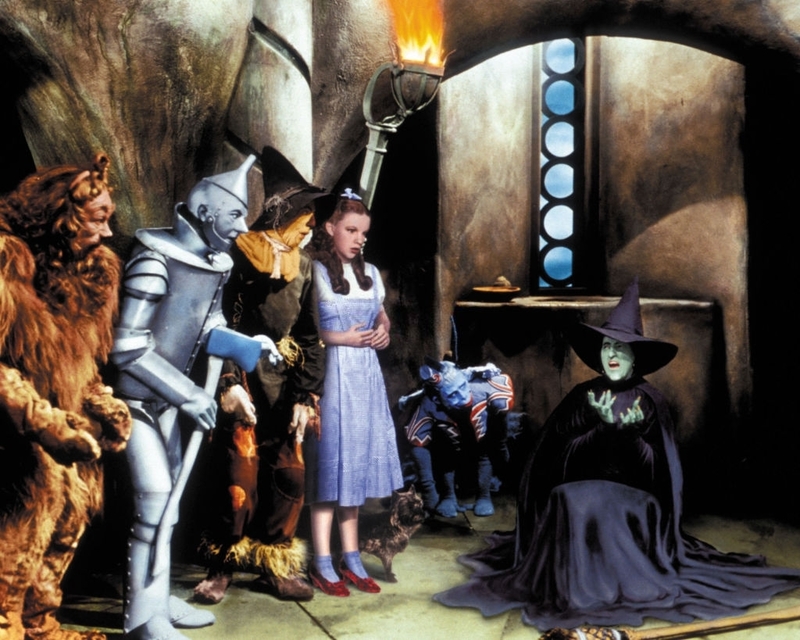
It wasn’t until the movie’s re-release in 1949, 10 years after its initial release, that this musical fantasy film was widely received, and earned MGM an additional $1.5 million (which is around $16 million today). Later, in 1956, it aired on television and won over new viewers, becoming an instant sensation and an overall classic. This just goes to show you that the box office doesn’t always get it right, and sometimes, it’s all about having the right timing.
Robin Hood (2018) — Estimated loss: $100 million
Those involved in this film’s creation insisted that the 2018 version of Robin Hood, took a more sophisticated and darker angle than the classic narrative. Well, the public sure didn’t find anything spectacular about the reboot. Although it was released at the end of 2018, it still managed to secure a top spot as one of the biggest flops of the year.

Not even a huge name like the Academy-Award-winning actor, Jamie Foxx, was able to save this film. Robin Hood was nominated for three(!) Golden Raspberry Awards, including “awards” for Worst Remake and Work Picture. Movie critics even went as far a calling it a “wasting of the cast”. Ouch. Hopefully, we don’t see any more modern twists to Robin Hood this year, next year, or better yet, the next decade.
Sinbad: Legend of the Seven Seas — (2003) Estimated loss: $125 million
This typical Disney-style animation brings to life a clever action-adventure plot that was met with mixed reviews, weighted mildly on the positive end. The story is based on a band of rascally adventurers headed by Sinbad (Brad Pitt) who is set on pirating “The Book of Peace” and fighting Goddess Eris (Michelle Pfeiffer) in the process. Bottom line: this kids’ flick bombed. Even with such Hollywood greats voicing the lead characters.
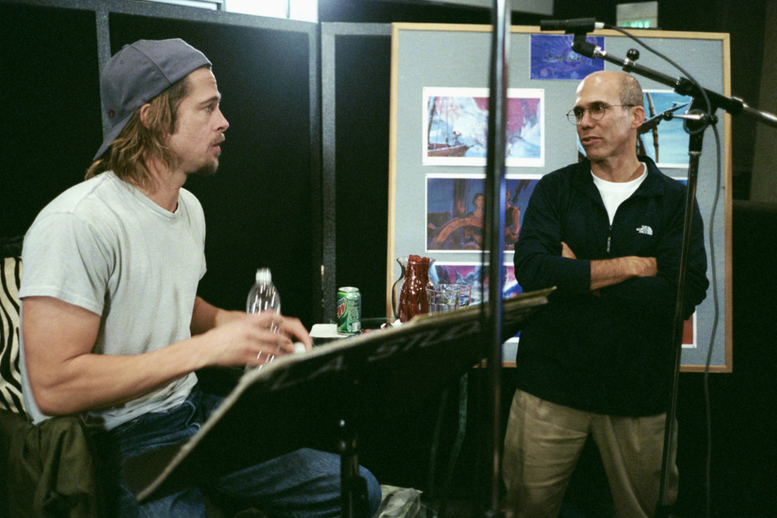
The final nail in the coffin for this epic money-loser? It opened against “Finding Nemo.” It also fell behind against “Terminator 3” and “Legally Blonde 2.” Opening weekend placed it at an embarrassing 6th, and its domestic gross came in just over a humiliating $26 million. Worldwide ticket sales grossed $80.8 million. DreamWorks spent $60 million on the budget and suffered the monumental loss of $125-$167 million.
John Carter (2012) — Estimated loss: $122-$200 million
Adjusted for inflation, John Carter lost up to $214 million. Director Andrew Staton (Pixar) based it on an obscure sci-fi novel by Edgar Rice Burroughs called “A Princess of Mars.” Surprisingly, it takes place in Barsoom, not Mars. (Don’t call it Mars. Disney reportedly wanted to distance itself from its other flop Mars Needs Moms and shortened the original title from “John Carter of Mars” to just John Carter). Stanton, its eminent director, it seems, is the main culprit for the insane budget because of his film-scrapping, reshoots, and edits.
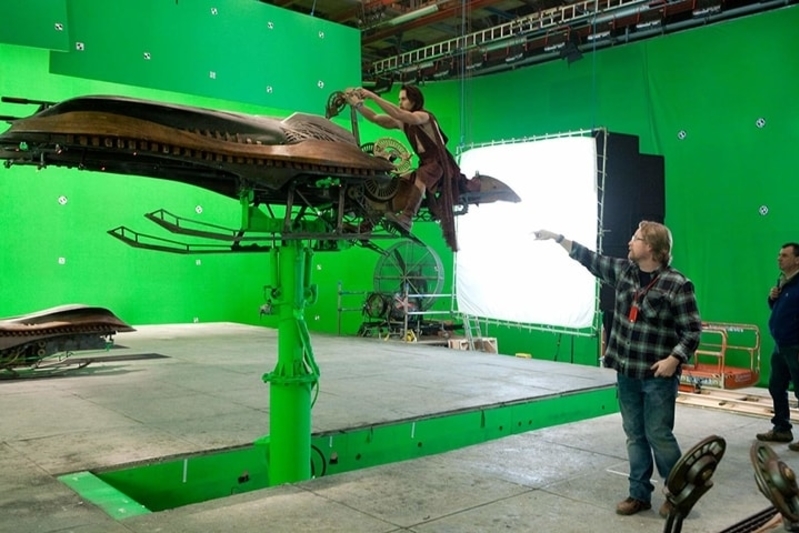
The Hollywood Reporter called it “a rather charming pastiche,” but reviews were definitely mixed. John Carter needed more than stellar reviews to save it. Unfortunately, the box office run ended at just over $73 million. Gross ticket sales were a tad higher at $284.1 million, but that didn’t erase the loss which was reported to be $130 – $214 million.
King Arthur: Legend of the Sword (2017) — Estimated loss: $115-$153.2 million
This film is loosely based, very loosely based, on the enduring British legend. Guy Ritchie’s signature cinematics and stylistic personality remake the “Legend of the Sword” beautifully and imaginatively. But it bombed. Critics were mixed to negative. Ritchie’s projects are highly scrutinized due to his phenomenal success. At Rotten Tomatoes they complain that the remake “wipes out much of what made it a classic story in the first place.”
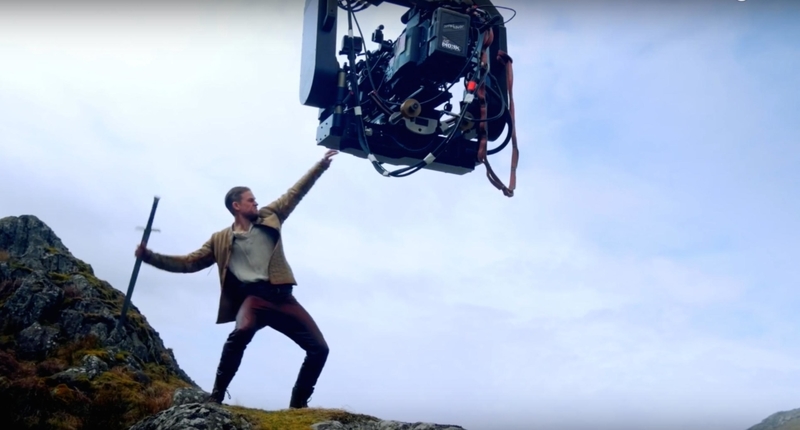
The film was supposed to be a mega-hit for the Warner Bros. empire. Tie-ins to the studio’s lucrative hero merchandising division were already being planned. Sadly, it floundered at the box office up against “Guardians of the Galaxy 2,” pulling in a weak $39 million. The film was too costly to make. With a $175 million budget and a box office that was far less at $148.7 million, Warner Bros. and pals lost $115-$153 million on the promising project.
Monster Trucks (2016) — Estimated loss: $109 – $123.1 million
Nickelodeon and Paramount pulled together some big names for this irreverent, high-concept action kids flick. Lucas Till plays Tripp Coley, the high school boy who confronts an actual monster in his truck, as well as Terravex Oil, the big, bad fracking company. Rob Lowe and Danny Glover also animate the comedy adventure. Creech, the monster, turns out to be an adorable beast and a very useful ally against the formidable fracking giant.
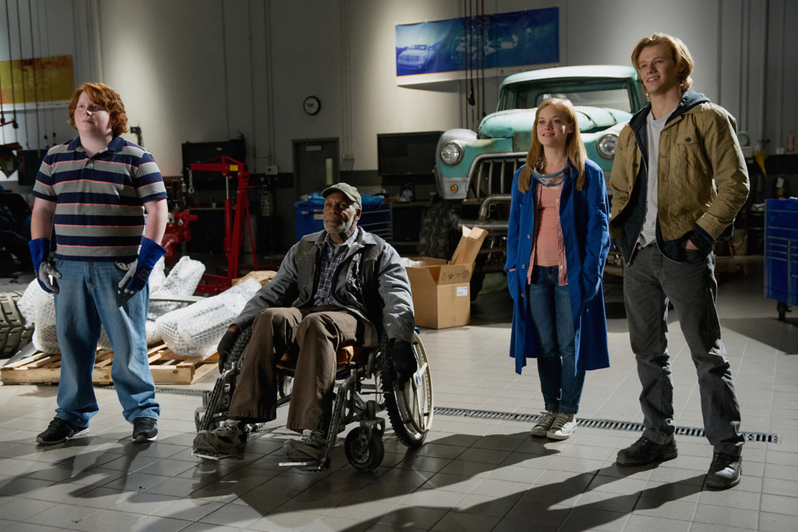
Fun trivia: The ‘monster inside of the truck’ concept came from an actual 4-year-old. Adam Goodman, former president of Paramount, had been wanting to bring the idea to the big screen ever since his toddler son imaginatively introduced it to him. Audiences didn’t hate it, critics were mixed, but it had a budget of $125 million and a box office of $64.5 million. Estimated loss, adjusted for inflation: $111-$126 million.
Mars Needs Moms (2011) — Estimated loss: $100-$144 million
“Mars Needs Moms,” the adorable animated children’s flick about Martian leaders finding a use for moms on their planet was produced by Disney with animation studio partner, ImageMovers Digital (Polar Express). The book, authored by Berkeley Breathed, may very well be better than the movie. Milo (Seth Green) is an Earthling who gets grounded because he will not complete his chores. The movie revolves around the 9-year-old boy and his personal journey that, by quest’s end, finds him realizing the value of a loving family.
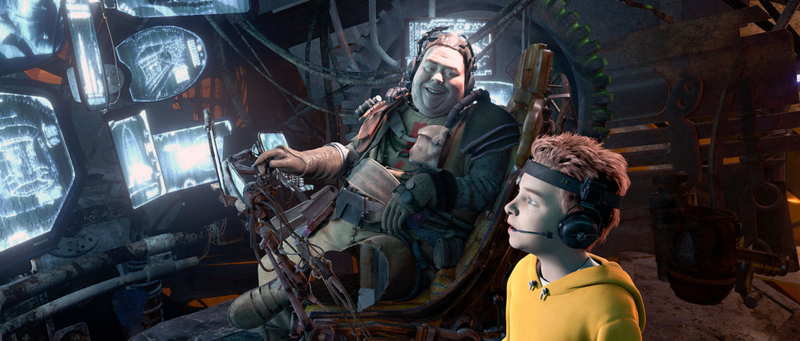
The film had a raging budget of $150 million. Mars Needs Moms would have to tear it up at the box office to break even. That didn’t happen. The movie brought in $39 million at the box office. Estimated loss, adjusted for inflation: $109-$157 million.
Titan A.E. (2000) — Estimated loss: $100 million
This one stumbled out of the blocks with the producer and director getting canned $30 million into the production budget with little to show for it. It never fully recovered. Don Bluth and Gary Goldman, directors of Anastasia, took over from there. Alas, it was still a disaster.

According to critics, the storyline lacked originality, but the animation is a visual masterpiece, a riveting 94-minute digital canvas. The action-adventure tale takes place on a post-apocalyptic Earth, far off in the 31st century. Popular Hollywood legends Matt Damon and Drew Barrymore lend some weight to the film voicing Cale and Akima, respectively. The characters try to save the remnants of mankind left on the fantastical scorched Earth. It flopped. Box office totals for Titan A.E. were a pathetic $36.8 million dollars. It tanked locally and globally. Estimated loss: $142 million, adjusted for inflation.
47 Ronin (2013) — Estimated loss: $97-$150
According to the Daily News in NYC, Keanu Reeves’ performance as Kai, a ronin (half-breed Samurai), could not have been less inspired. “47 Ronin” stars Hiroyuki Sanada, Jin Akanishi, Keanu Reeves, Kô Shibasaki, Rinko Kikuchi, Tadanobu Asano. This film had everything going against it. Too much holiday box office competition opening on Christmas day, a suffocating budget as high as $225 million, and very little interest, apparently. Opening in Japan, box office totals were a disappointing $3 million dollars.
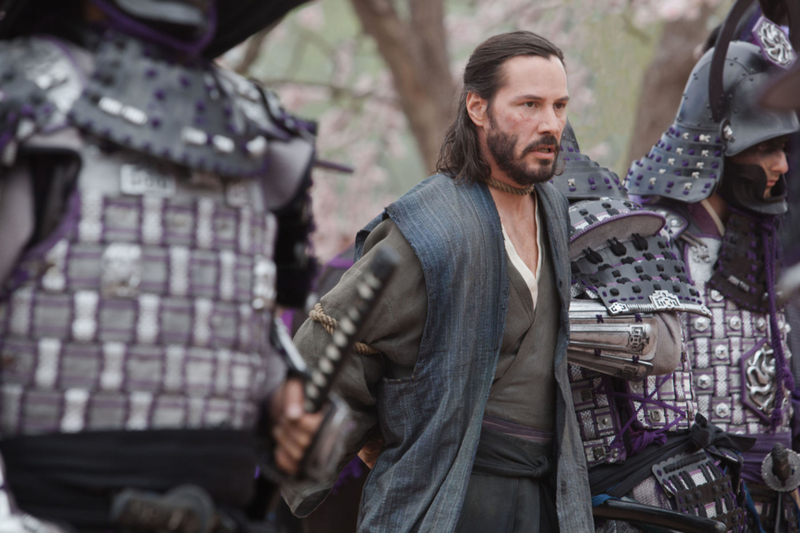
“47 Ronin” was directed by Carl Rinsch as his directorial debut. Universal distributed the film and several production companies contributed resources, time, and money. What we know is: critics didn’t like it, audiences didn’t show up to see it, and it lost a bundle. Worldwide, all told, it grossed $151.8 million, but it lost even more. “47 Ronin” lost $102-$158 million.
Stealth (2005) — Estimated loss: $96 million
The world’s top military jet fighter pilots face job automation. When a high-tech, evil AI autopilot virus takes over, the flight crew fight back. It was meant to be a fun and chill summer release. Critics mostly groaned.

Director Rob Cohen and co-pilot Columbia Pictures navigated this top-heavy ship to its crash and burn. Also on board, writer W.D. Richter and stars Josh Lucas, Jamie Foxx, Jessica Biel, and Sam Shepard. “Stealth” bombed at the box office internationally, nose-diving in nearly every nation and bringing in just over $44 million. Here at home, by the end of the domestic run, the smoldering remains of $32 million finished it, exacting a $76.9 million gross. The ground zero accounting ledger stands at $120 million in the red.
The Adventures of Pluto Nash (2002) — Estimated loss: $96 million
As it turns out, the sci-fi comedy “Pluto Nash” is an infamous wipeout, crashing and burning at epic proportions. It made Time magazine’s list of the “10 biggest money-losers of all time”, placing 3rd. It’s so bad, watching it makes legendary and iconic comedian Eddie Murphy break down and cry, according to himself.
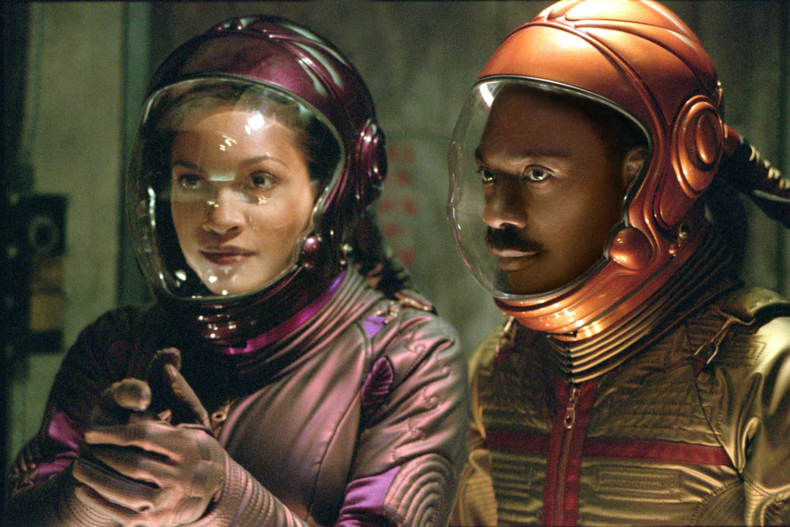
The story takes place in the 2080s, on the moon, where all Earth exiles are sent. Pluto Nash (Murphy) is assaulted by lunar gangsta thugs, forcing him to defend his nightclub and the rights of all of moonkind. This epic flop grossed merely $7.1 million at the “flop” office and it cost Warner Bros $100 million to make. That leaves the endeavor at a 95% net loss! In dollars, the loss is $131 million and the title of the biggest box office bomb in Hollywood.
The Mummy (2017) Estimated loss: $95 million
“The Mummy” is the worst movie Tom Cruise has ever made, hands down. No contest. Universal’s had its share, but as a horror flick, it did pretty bad. They pulled it from over 800 theaters in its third weekend. In “The Mummy” (2017) Nick Morton (Cruise) is a U.S. soldier and a raider (and seller) of ancient relics who gest possessed by an ancient evil Egyptian, previously mummified, princess demoness.
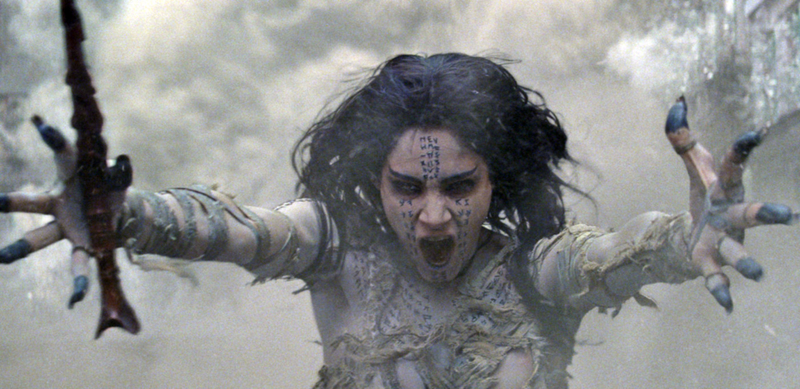
The only winner here is Tom Cruise who busted through his worldwide premiere record — “The Mummy” is his career-top global opening at $169.3 million. It grossed $410 million. It seems almost respectable at first glance. Universal’s production budget was $195 million, although the total production costs added up to $345 million after ads and marketing. And it lost an estimated $95 million.
The Lone Ranger (2013) — Estimated loss: $95-$190
Johnny Depp and Pirates director Gore Verbinski teamed up with Disney once more to try to make the Wild West as entertaining (and as profitable) as the South Seas. The immensely successful “Pirates of the Caribbean” starring Depp scored $600 million at the box office. The Lone Ranger didn’t. Ranger John Reid (Armie Hammer) and his Indian sidekick Tonto (Depp) were flatly not entertaining enough, according to many critics.
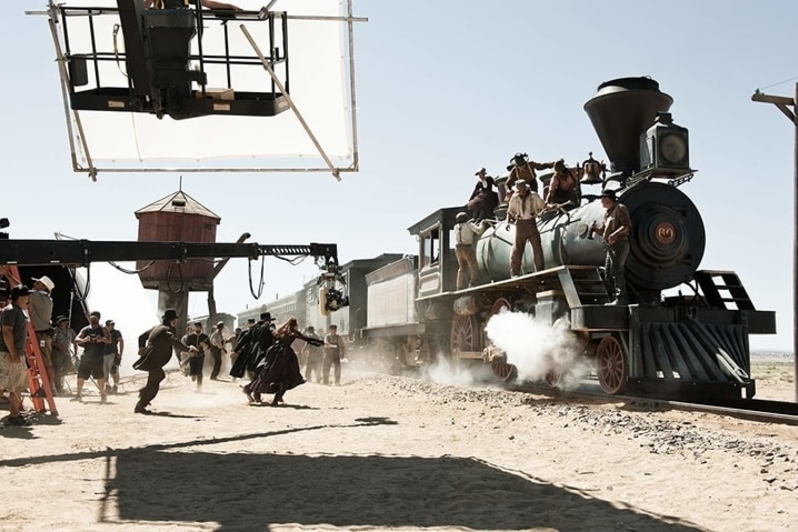
Typical of Disney production budget this one ballooned to up to $250 million. Gross sales matched it at $260.5 million. Estimated loss, adjusted for inflation: $100-$200 million.
Final Fantasy: The Spirits Within (2001) — Estimated loss: $94 million
In this sci-fi film, super-realistic digital graphics create an astounding visual of Earth in 2065. If you’re familiar with the latest generation video games by Xbox, you’ll have a quick sense of the augmented-reality style that makes characters look real. The movie was based on the game created by Hironobu Sakaguchi and Square Company. Financially, the film wrecked so badly in 2001 it forced the animation studio to close. (Works as a great ad for the game series though!)
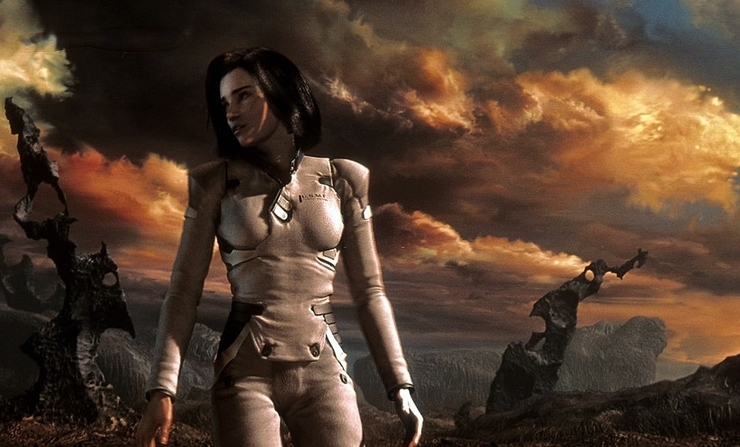
Critics were definitely mixed. Its plot didn’t stack up to the titans of the sci-fi genre, but visually, it was an unprecedented eye-dazzler. But, seventeen years ago, the digital feat went by virtually unnoticed. It was squashed by “Legally Blonde.” Total box office, worldwide: $85.1 million ($32.1 domestic). The film had a budget of $137 million and a loss of $130 million.
The Alamo (2004) — Estimated loss: $94 million
This version of the exceedingly overplayed battle of The Alamo was a major bomb at the box office. Many critics thought it was unmemorable, but reviews were definitely mixed. And, American history buffs and patriots likely loved it.
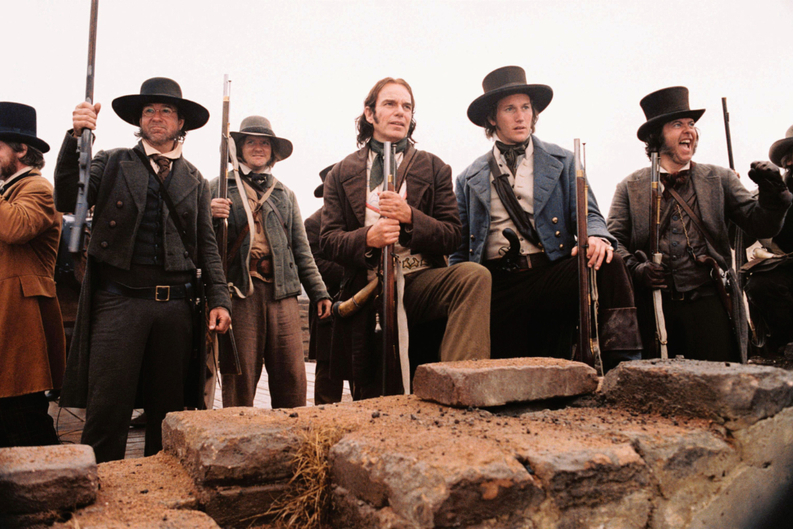
War movies generally don’t do that well, especially those that are not superbly done. In this particular rendition of “The Alamo,” it seems the Hollywood heavyweights sunk the budget. Disney’s Michael Eisner wrangled over the top-heavy investment including Ron Howard and Russell Crowe and opted to let go of Russell Crowe and bring in John Lee Hancock to take over directing. Ron Howard agreed to stay on as a producer. By the time of its theatrical release, it grossed an abysmal $25.8 million dollars. The production budget was $107 million dollars. And despite Eisner’s budget trimming, the total estimated loss rocketed to $122 million!
The Promise (2016) — Estimated loss: $94-$102.1
Taking place during the fall of the Ottoman Empire, and the Armenian Genocide, “The Promise” is a sweeping historical epic with a dramatic love story. Incidentally, the U.S., also, has not formally acknowledged the genocide. So, here’s another reason the film flopped, but also the reason it was made. In fact, getting the story out was a personal quest for the late Kirk Kerkorian. After his death in 2015, the production company he owned became Survival Pictures. “The Promise” premiered at the Toronto International Film Festival in 2016, and negative political feedback fed by Turkish/American ‘anti’ propaganda negatively affected the critical reception.
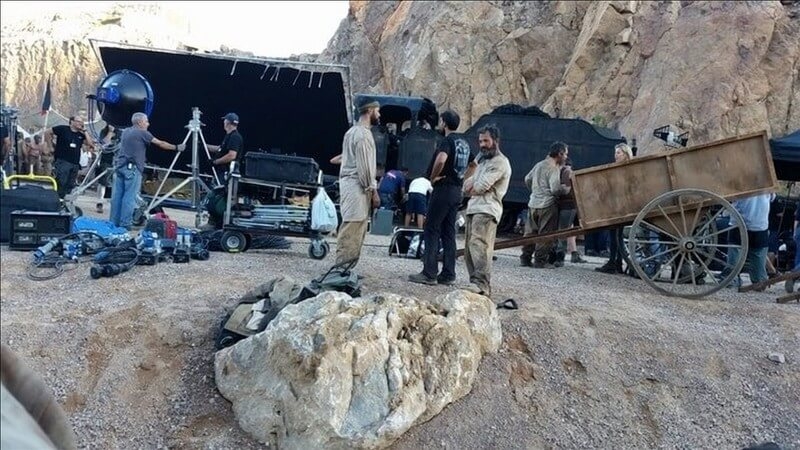
Celebrated director Terry George was joined by a talented lineup of actors. The production budget was $90 million. It brought in a paltry $10.5 at the box office. And it lost, a lot. Adjusted for inflation, it squandered about $96-$104 million dollars.
R.I.P.D. (2013) — Estimated loss: $91-$115 million
Let’s clear up the frustrated ignorance right away. It stands for Rest in Peace Department, and it comes from the comic book series of the same acronym. Its ripping cast includes Jeff Bridges, Ryan Reynolds, and Kevin Bacon, and it failed commercially and critically. Add it to the ‘books are better than the movie’ pile. Critics liked the cast but not much else.
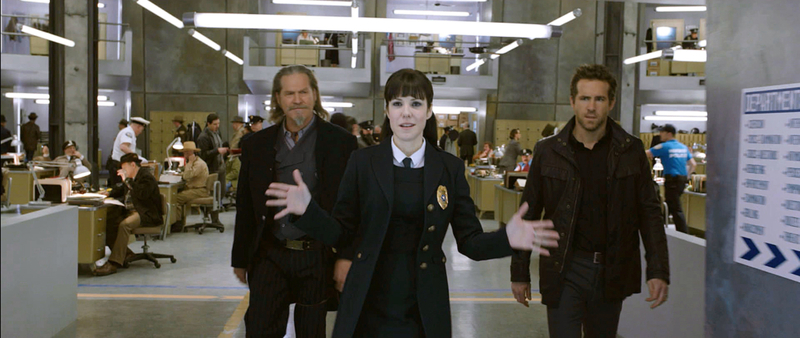
The massive production budget cost Universal $130 – $154 million, leaving box office cumulative sales infinitesimally dwarfed at $78.3 million. And, finally, the total loss was also massive: $96-$121 million.
Cutthroat Island (1995) — Estimated loss: $89 million
If you like pirate movies and the eponymous pirate attraction at the land of Disney, then you may just love it. With Geena Davis bringing Morgan Adams, the sword-slashing, musket-wielding pirate(ess) to life, it’s an irreverent adventure comedy. Still, for MGM and United Artists, it’s called a box office bomb. It did so poorly that it frightened film companies away from the genre for years until “Pirates of the Caribbean” came along.
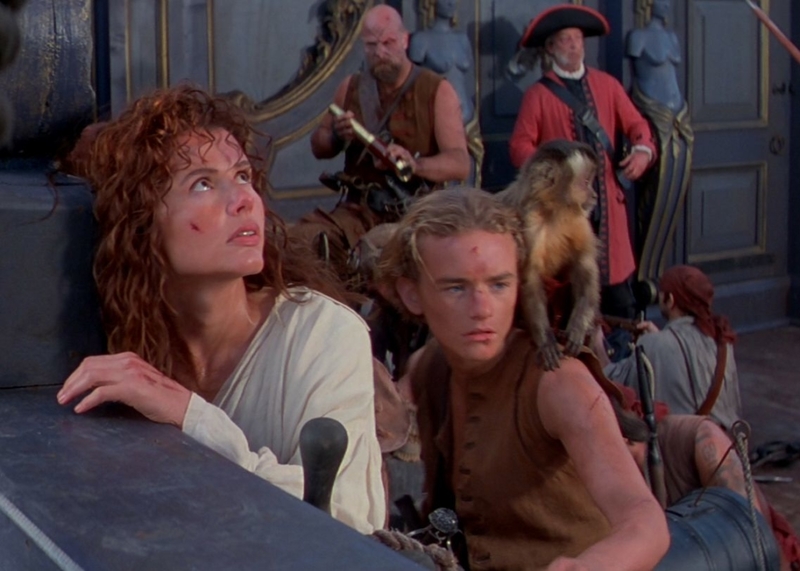
The box office totaled $18.3 million. Put that next to the production budget of $98 million and you’ll find the bottom line. “Cutthroat Island” lost about $143 million. On-site filming in the gorgeous, see-through blue tropical seas and all those exciting explosions sure adds up… To one of the biggest movie flops known to the big screen.
Evan Almighty (2007) — Estimated loss: $88 million
Big on comedy legends, “short on laughs,” according to Rotten Tomatoes. Stunning special effects helped it register 23%. Those special effects, CGI in order to animate an ark-load of Noah’s species-protected beasts during the flood made it the most expensive movie at the time it was produced.
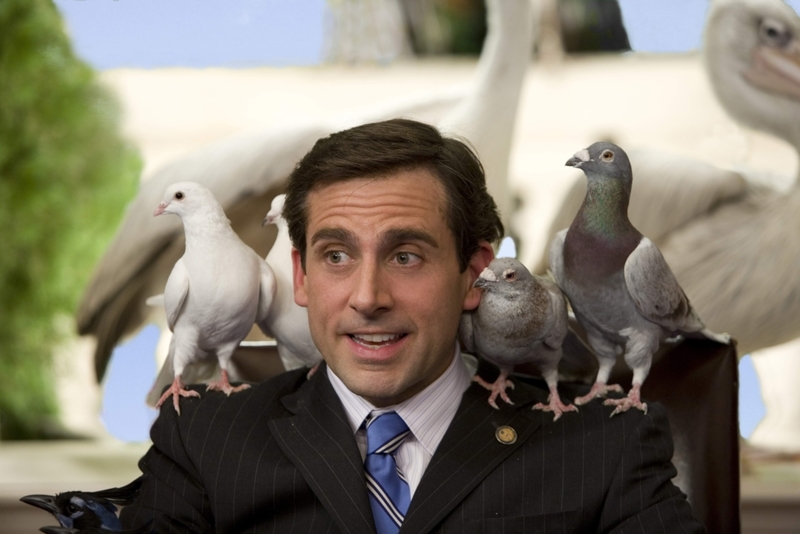
Evan (Steve Carell) who is a newly elected congressman of fictional town Prestige Crest, chills with God (Morgan Freeman) hoping the Almighty will answer the congressman’s prayers. He just won an election on a campaign promise to save the world and now the difficulties are piling up. The official production budget was $175 million. However, according to rumor, it likely looked more like $210 million. The box office grossed at $173.4. Estimated loss: $104 million. Yikes.
Rise of the Guardians (2012) — Estimated loss: $87 million
DreamWorks Animation and Paramount produced and distributed the whopping flop, pouring $125 million into a massive marketing barrage. The movie marked the end of their contract that produced a slew of fantastic films. “Rise of the Guardians” was a wonderful kids’ flick, however, it was also one of their biggest disappointments (from the profit margin angle).
Based on William Joyce’s “The Guardians of Childhood” and on “The Man in the Moon,” all the troops must be called in to thwart Pitch Black (Jude Law) from sinking the world into never-ending darkness. Santa Claus (Alec Baldwin), The Tooth Fairy, the Easter Bunny (Hugh Jackman), even the Sandman join the fight. Together they recruit Jack Frost to save the day. Adjusted for inflation, the loss is about $93 million dollars, after bringing in $306.9 million dollars!
Jupiter Ascending (2015) — Estimated loss: $87 – $120 million
Jupiter Jones (Mila Kunis) is a young, ordinary girl who always thought she was destined by the stars for greatness. And then it happens. Tatum (Caine Wise) an interplanetary warrior comes down from the galaxy to inform her that she is, indeed, destined for greatness that extends far beyond Earth.
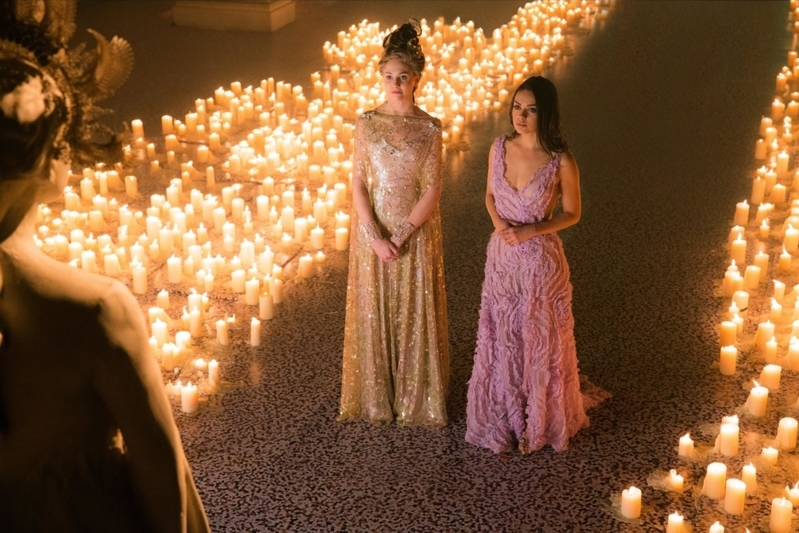
If it sounds corny, it kinda is. When it opened in January 2015, it floundered against “The SpongeBob Movie: Sponge Out of Water,” landing with a domestic run of $47.4 million at the box office. Directed and written by the Wachowskis with help from Grant Hill, critics shunned it, Rotten Tomatoes gave it a 26%, though it may just be that one movie you go see with your friends, just for kicks. “It’s so stupid it’s beautiful,” according to The Mary Sue review site. Gross global sales for “Jupiter Ascending” totaled $184 million.
Jack the Giant Slayer (2013) — Estimated loss: $86 – 106 million
Reviews were mixed. Critics called the film dull, lacking inspiration, and over-produced. Others found it worth the fare and “reasonably engaging” (for a kids’ fantasy flick). The memorably versed narration, thundering, “Fee Fi Fo Fum!” dramatizes the olde, English fairy tale for the big screen, and the production is billed as a deeper, backstory, to the 16th-century tale about Jack and the enchanted Beanstalk.

Jack the Giant Slayer was a joint venture by Warner Bros.’ New Line division and Legendary. The fantasy adventure film was directed by Bryan Singer. Also starring, Stanley Tucci, Ian McShane, Bill Nighy, and Ewan McGregor, the story was written by Darren Lemke, who has been pitching it since 2005. The production budget rang in at an alarming $185-$200 million. And, an estimated financial loss of, wait for it…. $90 – $112 million (ouch).
A Wrinkle in Time (2018) — Estimated loss: $86 -186 million
The critics didn’t hate it, Oprah graced the big screen for the first time in, like, 20 years, it was based on the celebrated and adored children’s literary classic by Madeleine L’Engle, yet, somehow it only grossed its production budget. And for goodness sake, Disney backed it! The children’s film production leviathan lavished upwards of $60 million on TV ads, marketing, and other promos. Sadly, they would not recover those costs.

Overall, Disney and feel-good themes predominate the fantastically visual production directed by Sundance Film Festival award-winner Ava DuVernay. And overcoming evil, light over darkness, and the goodness of mankind preserving universal harmony, is exactly what you’d expect from Mrs. Which (Ms. Winfrey). The film disappointed hopeful expectations at the box office with a gross of $132.7 million. The budget is nearly a carbon copy at $130 million. Estimated loss registers at $86-$186 million.
Pan (2015) Estimated loss: $86 – $150 million
This could be one of those movies that really deserved to crash and burn. It had a ginormous budget, a weak script, and a story that’s been told again and again and again… Yet again, some liked it. And not just a few found it delightfully entertaining. In this film’s case, however, the critics won out. The story of Pan works as an alternative tale of Peter from the originator’s “Peter and Wendy,” a prequel to that tale. Film reviewers were not impressed.
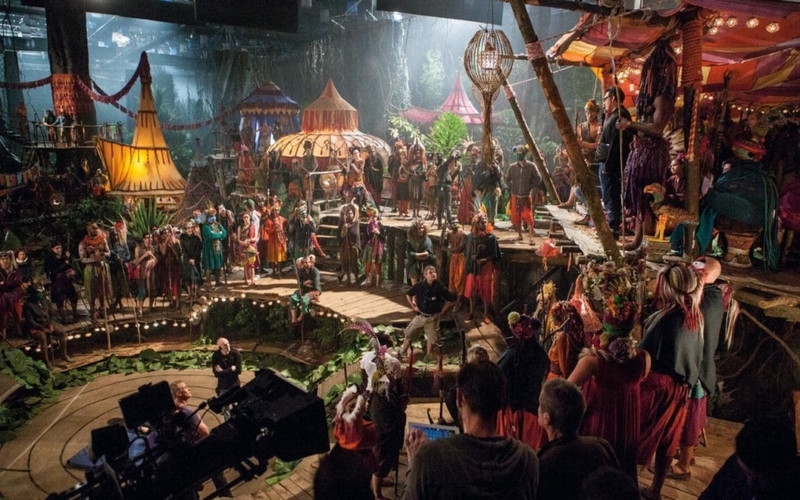
Plainly, it flopped. Every which way. The budget, screaming to $150 million, is only matched by its marketing campaign that clocked in at around $125 million. And then there’s the extensive financial loss: $89 – $155 million, almost eclipsing the gross, $128.4 million.
The Good Dinosaur (2015) —Estimated loss: $85 million
Yes. A Pixar Animation Studios film flopped. “The Good Dinosaur” has the unique distinction of being the studio’s lowest-grossing movie, and, their first box office bomb. The culprit, as far as we can tell: too much cute, not enough adult humor.
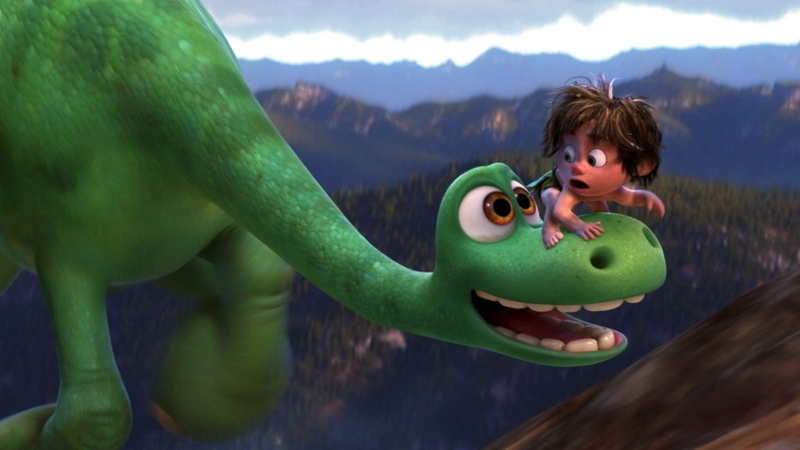
Distributed by Disney and produced by Warner Bros., critics liked Pixar’s sixteenth animated film. They called it a beautiful and charming, enchanting and sweet family film. Graphics and images are realistically and gorgeously rendered making the movie a visual masterpiece according to most critics. For some reason, the crowds simply didn’t show up to the box office. Adjusted for inflation, the movie lost about $88 million. Budget estimates are $175-200 million, a heavy investment eating into its gross of $332.2 million.
Seventh Son (2015) — Estimated loss: $85 million
Hop back in the time shuttle and bolt five centuries back to the supernatural realm where knights battle dragons, beasts, and pagan evil. Sir John Gregory, (Jeff Bridges) the seventh son of a seventh son, protects the country from Wiccan atrocity. And Mother Malkin (Julianne Moore) is one wretched witch who must be vanquished.
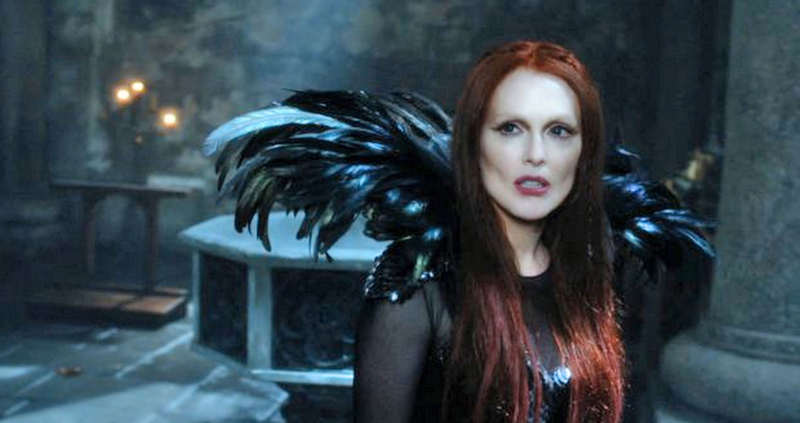
Based on “The Spook’s Apprentice” series by English author Joseph Delaney, the fantasy adventure film version takes place in the 1600s. Directed by Sergei Bodrov, and released by Universal Pictures, “Seventh Son” did well overseas grossing a decent $96.9 million. Domestically, on the other hand, it lost out to the latest Spongebob movie… Total domestic box office flop total: $17.2 million. This brought the worldwide gross to $114.2 million. Estimated loss, adjusted for inflation, $88 million.
Treasure Planet (2002) — Estimated loss: $85 million
“Treasure Planet” is a Disney adaptation of “Treasure Island” by Robert Louis Stevenson. The only question left is: how do they ruin it? How about by dragging the venerable 18th-century children’s literary classic into the land of sci-fi and CGI? Not exactly.

“Treasure Planet” ranks near the top of Disney animation’s all-time worst performers. Estimated loss, adjusted for inflation was $116 million dollars, however, some suggest that doesn’t accurately reflect costs once Disney’s colossal ad campaign is calculated in. Still. The box office turned its back on it, squeezing out $13 million when it opened during the long Thanksgiving holiday weekend. Having said that, it was up against “Harry Potter and the Chamber of Secrets.”
Town & Country (2001) — Estimated loss: $85 million
A romantic comedy about two wealthy NYC couples and a midlife crisis. Sounds funny… But wait! The all-star cast runs like a laundry list of Hollywood titans: Warren Beatty, Diane Keaton, Goldie Hawn, Garry Shandling, Andie MacDowell, Jenna Elfman, Nastassja Kinski, and the immortal Charlton Heston to wrap it up. It’s a veritable line-up of comic legends. It’s got to be funny, right?? Well, if aging men chasing affairs seems humorous, this may be your movie.
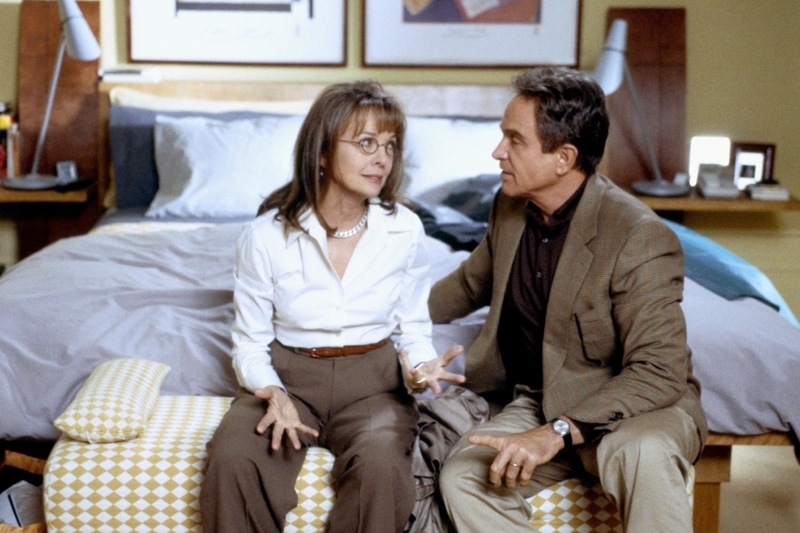
Fraught with internal issues and production hiccups which dragged production out for three years, New Line Cinema knew it was going to flop. As one of the biggest flops of the 2000s, “Town & Country” lost $117 million, adjusted for inflation. Grossing a paltry $10.4 million, the production budget literally dwarfs the gross at $90 million.
Valerian and the City of a Thousand Planets (2017) — Estimated loss: $84 million
Here’s a film that grossed nearly $226 million, yet managed to make the flop list. Critics either loved it or hated it. Reviews were definitely mixed — from “deliriously entertaining” to “a punishing 137 minutes”. All agree it’s a cutting edge, strangely original sci-fi with stunning cinematography. The story is based on the French comic book series called “Valerian and Laureline.” French director and filmmaker Luc Besson produced, wrote, and directed the film. His film studio Europacorp introduced the movie at Cannes in 2015, and it hit the big screens in the United States in July of 2017.
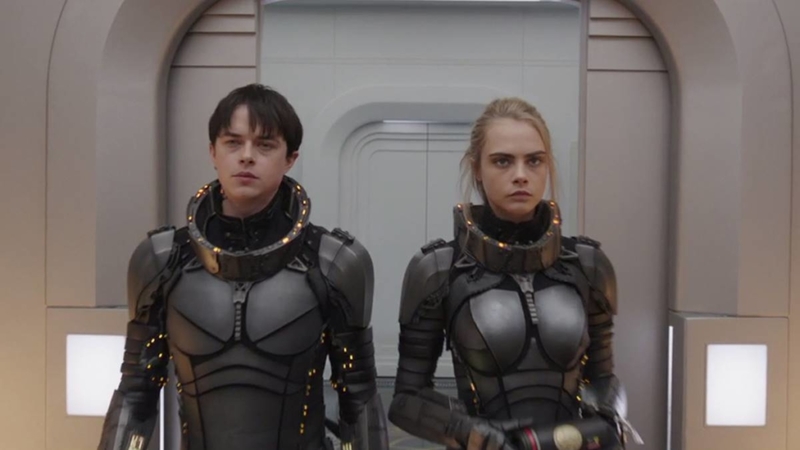
Fundamental Films provided the majority of financing for the $177.2-$180 million budget. Worldwide gross sales totaled $225.9 million. $33 million of box office sales came from France, the French loved it! Unfortunately, it flopped. Total loss stayed at $84 million.
Supernova (2000) — Estimated loss: $83 million
“Supernova” started out as a sci-fi B-movie way back in 1990. Ten years later, MGM’s financial albatross was produced by United Artists and directed by Francis Ford Coppola, Jack Sholder, and Walter Hill. Hill was officially credited as Director, although, at one point, he became so frustrated with MGM and the film’s progress that he quit and demanded his name be removed from the project.
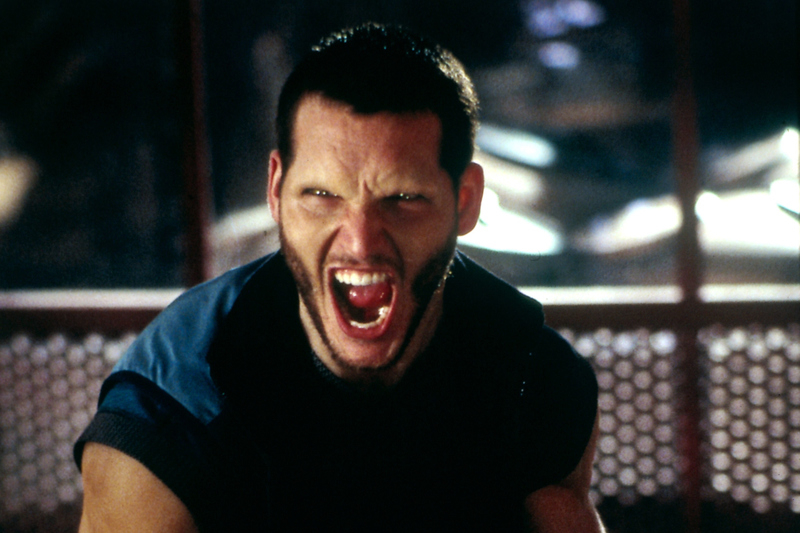
“Supernova” takes place way off in the 22nd century. When the crew of the Nightingale 229 find their hurling ship getting sucked into an enormous dying star (a supernova event) and must save themselves from certain annihilation. In the meantime, poor acting, gratuitous sex scenes, and humor heavily weighted “down there” dominate. Don’t take the kids. All told, Supernova lost $118 million, adjusted for inflation. The ten-year project cost $90 million to make, and it only brought in $14.8 million during its box office showing.
The Nutcracker in 3D (2010) — Estimated loss: $82 million
Not only did the “Tomatometer” register a 0% for “The Nutcracker in 3D,” but on Rotten Tomatoes, they said that the movie “is a stunning exercise in astonishing cinematic wrong-headedness.” Commonsense media — a website that polices films and TV shows for age-appropriate content — said that the movie is “too dark” for children. They also complained that it barely passes as a representation of Tchaikovsky’s “Nutcracker” ballet.
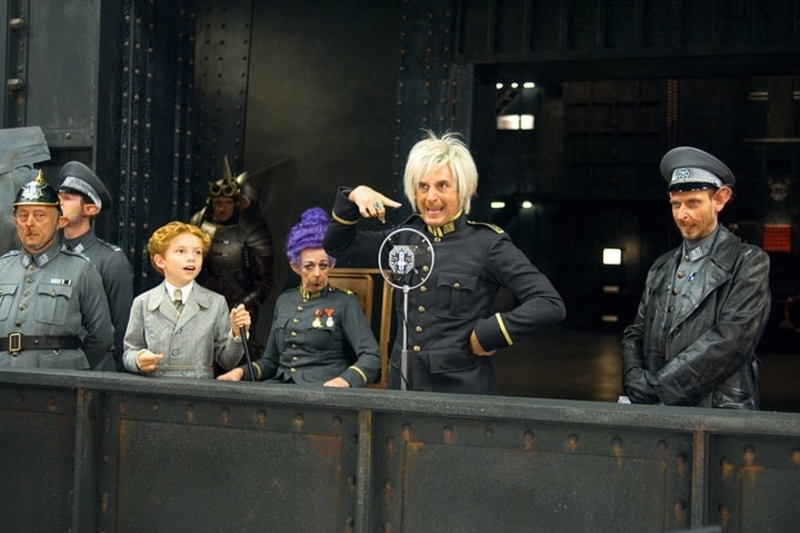
It was either too scary, too boring, or too weird for American critics. The “Nutcracker in 3D” had a budget of $90 million and it lost $92 million, adjusted for inflation. At the box office, it took in $16.2 million. The film crashed, burned, and bombed during its 2010 Christmas release.
Blade Runner 2049 (2017) — Estimated loss: $80 million
K (Ryan Gosling) an LAPD cop and blade runner, finds himself situated in 2049 Los Angeles, in search of a long-buried mystery. The problem is unearthing it could cause human annihilation. It’s a Warner Bros. picture directed by Denis Villeneuve, with a storyline influenced by Philip K. Dick’s book, “Do Androids Dream of Electric Sheep?”
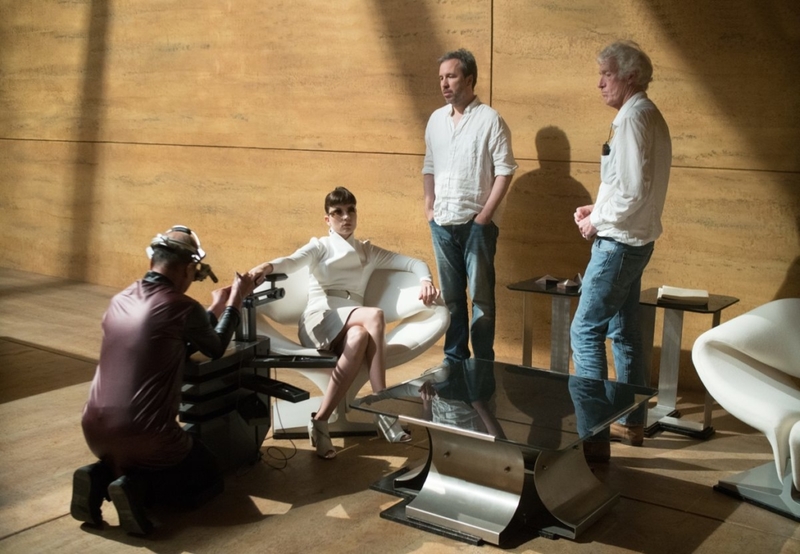
“Blade Runner 2049” is the sequel to the original mega-hit, “Blade Runner,” also based on Dick’s book, and one of the most celebrated science fiction films ever made. The fact that the sequel did well with critics up against that measure says something. In fact, “Blade Runner 2049” was considered one of 2017’s best movies and won two 2018 Oscars — Best Cinematography and Best Visual Effects. Evidently, the 163-minute box office flop is worth seeing. Its production budget was $150-$185 million. It grossed $259.1 at theaters, but it lost $80 million dollars.
Fantastic Four (2015) — Estimated loss: $80-$100 million
The “Fantastic Four” was the core of Marvel’s menu of superheroes. With the original four characters developed by legendary comic icons Jack Kirby and Stan Lee, the title dominated the vanguard popularity of the comic book series throughout the 60s and well into the 2000s. Every other Marvel superhero film has blasted the roof off the box office. So what happened?
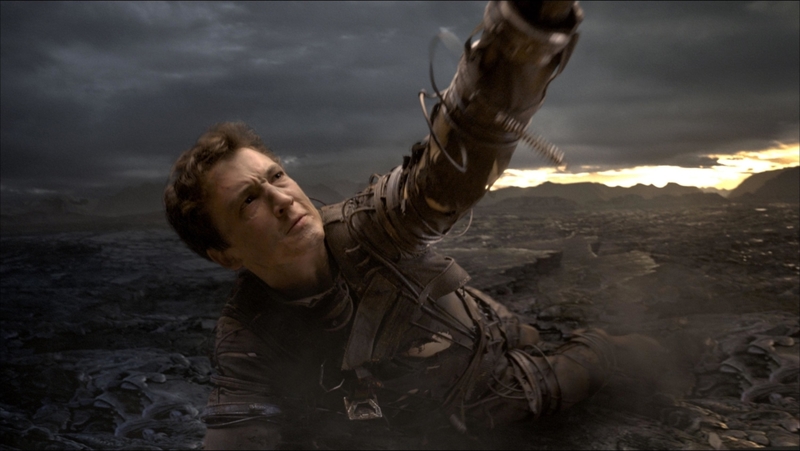
Critics agree that it starts off pretty good. Unfortunately, they say, characters are underdeveloped, storytelling is weak, and dialogue gets downright corny at times. Twentieth Century Fox’s action-adventure, sci-fi fantasy film lost big. The production budget was $120-$125 million. Gross sales were $168 million, and it lost $83-$103 million. Next: The film that kinda almost didn’t flop…
The Man From U.N.C.L.E. — (2005) Estimated loss: $80 million
Based on the 1960s TV series with the same name, the rights to “The Man From U.N.C.L.E.” were procured by producer John Davis way back in 1994. The Warner Bros. release with director Guy Ritchie premiered in August 2015, more than two decades later.

With Ritchie (Sherlock) at the helm as director and co-writer, hopeful optimism for a cool new retro-spy flick soared and then flopped. While the film delivers visually (as one would expect from a Ritchie endeavor), the Cold-War era spy thriller that saves the world from a secret international crime syndicate did not nestle itself into a niche clever enough for critics. And, up against “Austin Powers” (yet another 60s spy action-thriller comedy), there was tough competition. The movie lost $83 million dollars. With a budget of $75 million and a box office gross of $109.8 million, “The Man From U.N.C.L.E.” is considered a flop.
Gods of Egypt (2016) — Estimated loss: $79 – $90 million
Spoiler alert: it flopped. Splat. The flood of bad reviews may have in fact sunk hopes for a strong box office release, triggering director Alex Proyas to liken the critics to “diseased vultures”. It must be frustrating standing by while ravenous scavengers tear your project apart on the eve of its release.
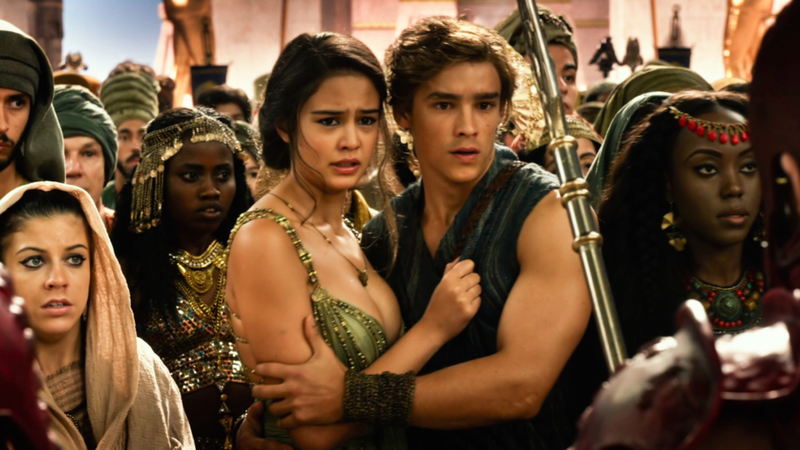
“Gods of Egypt,” tells the story of Bek (Brenton Thwaites), a human on a mission to take down the evil god Set. Of course, he also saves the beloved princess from the underworld. The movie also stars Gerard Butler, Chadwick Boseman, and Courtney Eaton. In the end, the fantasy-fiction film flopped. The production budget was $140 million. The box office brought in $150.7 million. All told, the loss for Lionsgate’s investment totaled $81-$92 million, adjusted for inflation.
Sahara (2005) — Estimated loss: $78.4 – $100 million
Apparently. Disease, plus dust, plus third world poverty does not equal a blockbuster movie. Imagine: it was billed as a comedy-adventure film. Maybe 2005 was a bad year for movies, or maybe the movie is never as good as the book. The author, Clive Cussler, who was given a handsome sum for the rights to his book ($10 million and creative control over the script,) presumably agrees. In fact, he was so unhappy with the theatrical release that he sued Paramount over it.
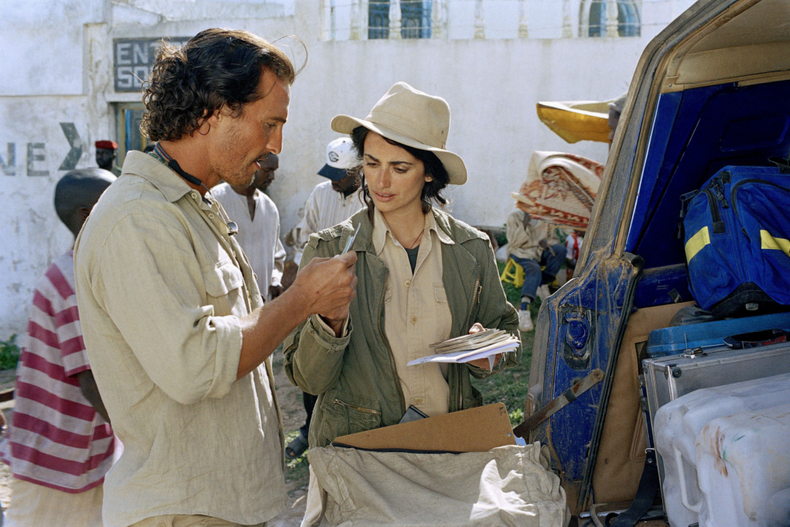
The production was an international effort, a co-production between the UK, Spain, Germany, and The U.S. Still, worldwide it bombed earning only $119.3 million. With a budget of $160, it lost big: $98-$126 million after taxes.
xXx: State of the Union (2005) — Estimated loss: $78 million
As another failure for Sony, “xXx: State of the Union” plummeted to 17% favorability on Rotten Tomatoes. They hoped for a theatrical debut topping $20 million, but bad reviews found it at one of the worst openings for a film of its size. The original film, “xXx” (2002) succeeded in turning a profit, “xXx: State of the Union” didn’t.
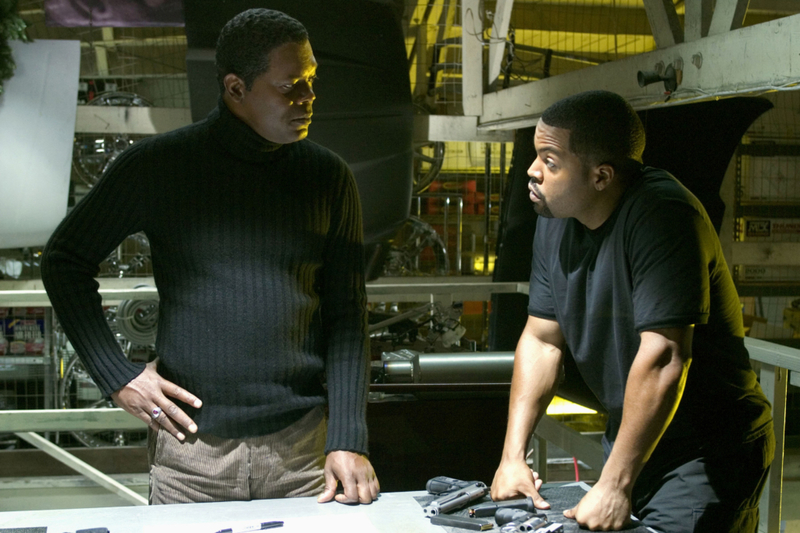
“xXx: The State of the Union” is a movie about secret agents racing against the clock to save the U.S. government from being toppled by a secret military coup. Sounds pretty good, ya? Nope. Critics say it was poorly executed. Once again, big names and expensive actors were of no use. All in all, the film lost $98 million, adjusted for inflation. It had a budget of $113.1 million and a worldwide net gross of only $71 million. Nevertheless, the xXx franchise remains alive and funded.
How Do You Know (2010) — Estimated loss: $76 – $105 million
For James Brooks, the director of the romantic comedy-drama film, “How Do You Know,” it’s not just a flop, it is a career-ender. Responsible for such memorable and funny hits (“Terms of Endearment,” “As Good As It Gets,” and “The Mary Tyler Moore Show,” and wielding a powerhouse (and very expensive) cast including Reese Witherspoon, Jack Nicholson, Paul Rudd, and Owen Wilson — Brooks just didn’t pull it off. It cost the production team $10 million for his time as director of the 2010 release.
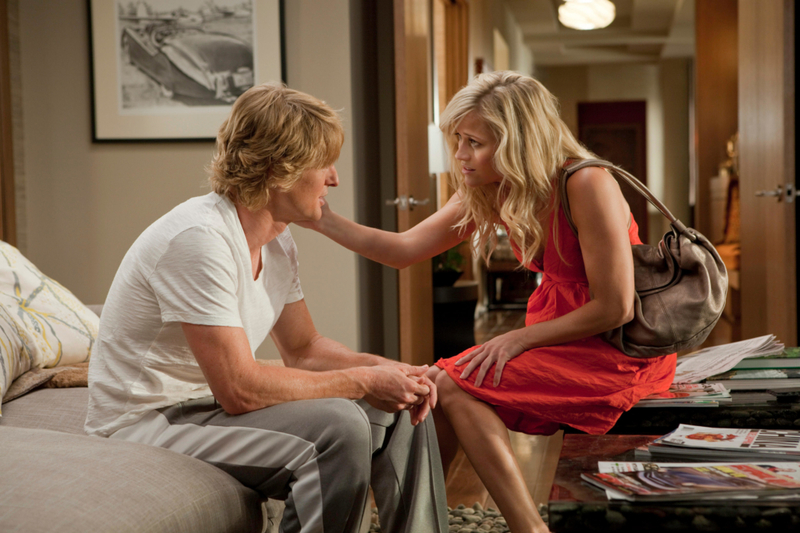
Great director, a stellar cast, and one of the most expensive losses ever. The budget for the Sony Pictures flop was $100 million. Gross profit was a paltry $48.7 million and losses, adjusted for inflation, added up to $85-$118 million. Nothing funny about that either.
Power Rangers (2017) — Estimated loss: $76 million
The “Power Rangers” were immensely popular as a TV show and a phenomenon in the 90s. In this film version, it’s a gang of misfit teenagers who save the world. Meeting each other in high school detention, the group of unlikely superheroes includes an autistic and an LGBTQ superhero, the first superhero movie to be so inclusive. The critics liked the cast starring Dacre Montgomery, Naomi Scott, R.J. Cyler, and Becky G. As for the directing and editing, …not so much.
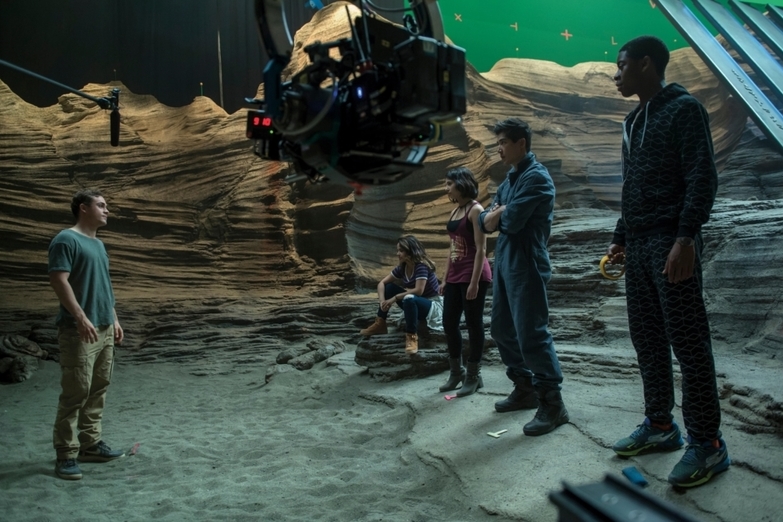
Opening up against “Guardians of the Galaxy,” turnout for “Power Rangers” at the box office was thwarted and doomed. In fact, it brought in only $1.2 million on its first day. “Power Rangers,” the 2017 movie, lost 76 million dollars. Another complaint was its crude humor and incessant product placements. With a production budget of $100 million dollars and gross sales at $142.3, it’s an official flop.
Tomorrowland (2015) — Estimated loss: $76 – $150 million
They called it “Tomorrowland.” Critics say, however, that as a Sci-fi film it veers too much into Fantasyland. Maybe George Clooney and Brad Bird, director of “The Incredibles” and “Ratatouille” could save it? Well, no. “Tomorrowland” is a science fiction adventure where the two heroes, Frank (Clooney), an embittered, former boy-genius, and an optimistic teen partner, Casey (Britt Robertson), must save the world and the fantastical world of Tomorrowland! With the use of a lapel pin with a “T”, space/time warping and shuttling, a robot named Athena, and a staunch faith in science and technology, the task is managed — it’s Disney, don’t forget.
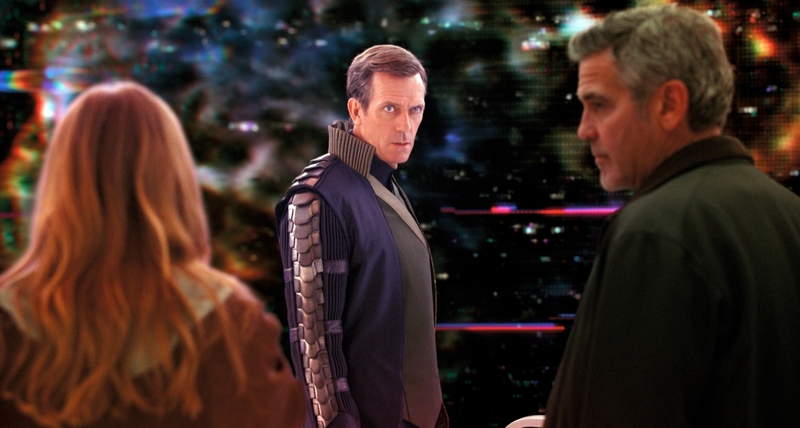
But all the magic didn’t save them from losing $79-$155 million, adjusted for inflation. And it won’t bring back the $180-$190 million budget. It grossed $209.2 million. On the upside, however, Rotten Tomatoes gave it a 50%, so, not too bad.
Windtalkers (2002) — Estimated loss: $76 – $81 million
Now here’s a movie that bombed so badly that MGM fired its president of worldwide marketing and distribution. It also pushed MGM’s stock to nearly its four-year low point. It wasn’t all Nicolas Cage’s fault. The movie was the fourth consecutive bomb for MGM, and the president who got canned was only on the job for one year.

“Windtalkers” just wasn’t that good. Roger Ebert only gave it two measly stars lamenting, “The Navajo code talkers have waited a long time to have their story told. Too bad it appears here merely as a gimmick in an action picture.” For a movie about war, American soldiers, and the Navajo, it seemed to turn off every audience. Adjusted for inflation it lost up to $110 million, while it grossed merely $77.6 million. The production budget practically mirrored its loss tally at $115-$120 million.
The Wolfman (2010) — Estimated loss: $76 – $80 million
Based on the 1941 American movie of similar title, “The Wolfman” has all the classic features one would expect of a werewolf story — the full moon triggers the mangy, monstrous metamorphosis — but it lacks a certain, let’s call it, edge, that “Twilight” fans expect. Although, nonetheless, it apparently hit the mark in some ways because it became a cult classic in spite of it all.
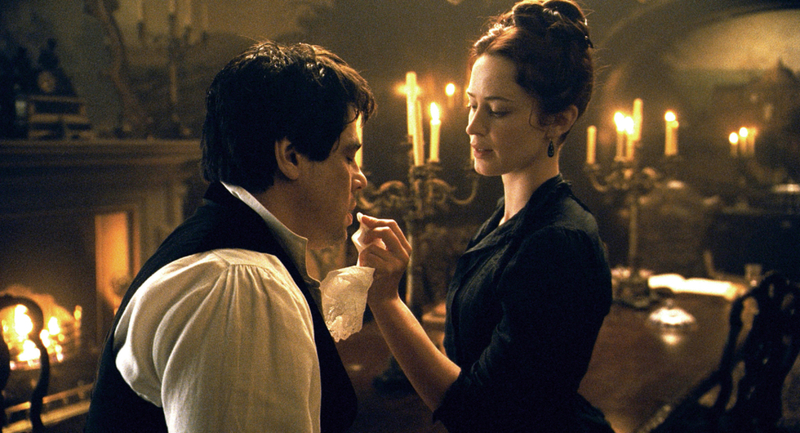
The vivid and realistic special effects of which animate the gruesome transformations earned the movie an Oscar for makeup, by the way. But even that, as well as its big names, del Toro and Anthony Hopkins, could not make the venture profitable. The film lost $85 to $90 million, adjusted for inflation. Gross profit for “The Wolfman” is recorded at $139.8 million while the production budget was $150 million.
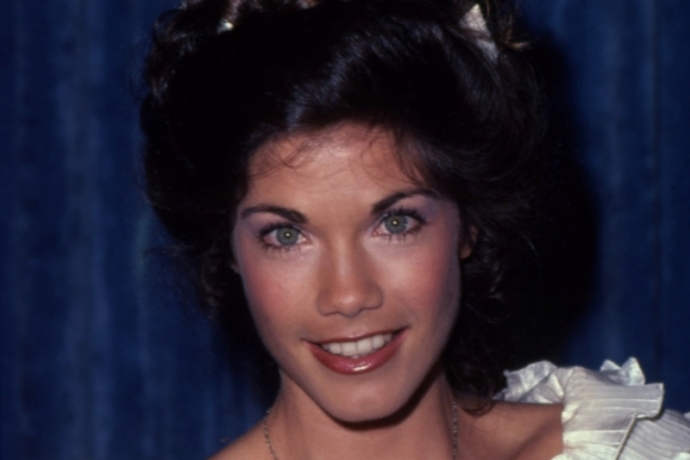
From Dating Hugh Hefner to Winning Life: The Story of Barbi Benton

Amazing Celebrity Houses

Interesting Facts You Never Knew About Dubai

The Hunger Games Memes & Gems Only Real Fans Get
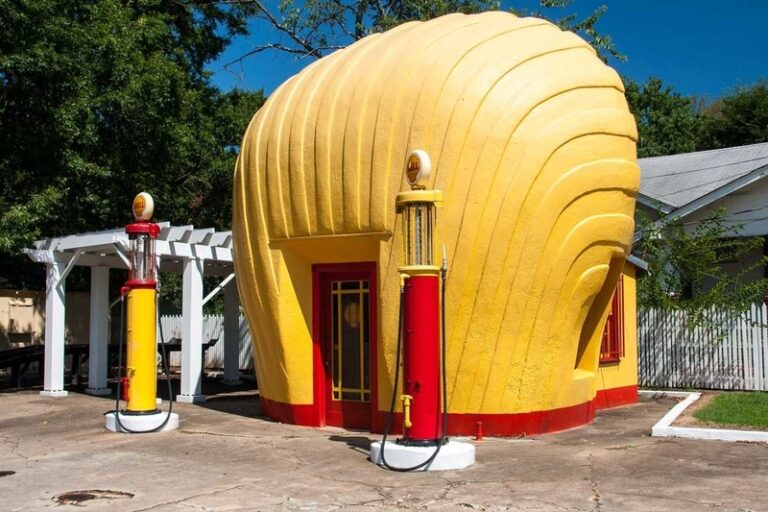
Trap or Trip: Tourist Attractions You Might Want to Skip
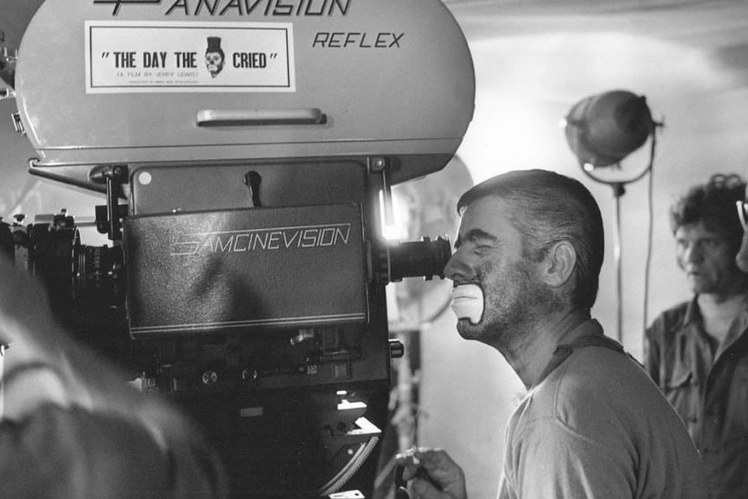
A Journey Through the Life of the King of Comedy – Jerry Lewis
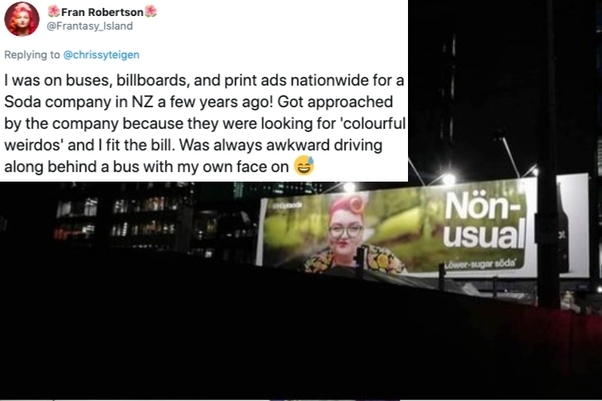
60 Seconds of Fame – People Share Their Best Stories on Twitter

More Photos of the Old Wild West You Won’t Believe Exist!
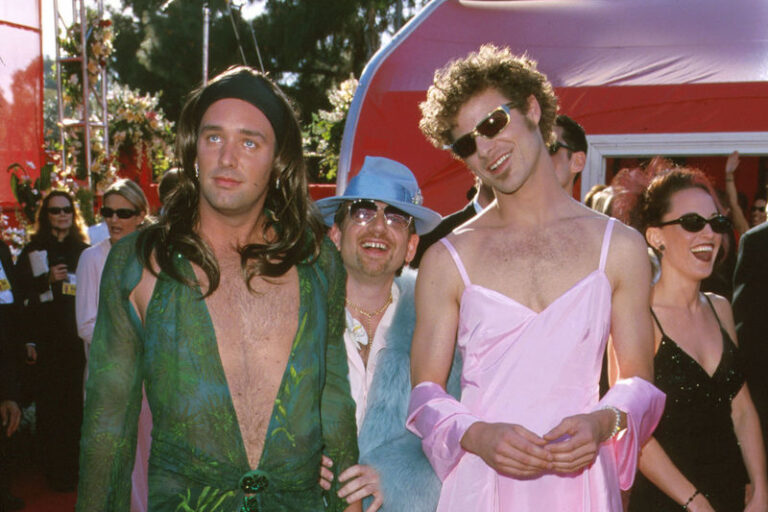
The Most Embarrassing Red Carpet Moments That Will Make You Cringe
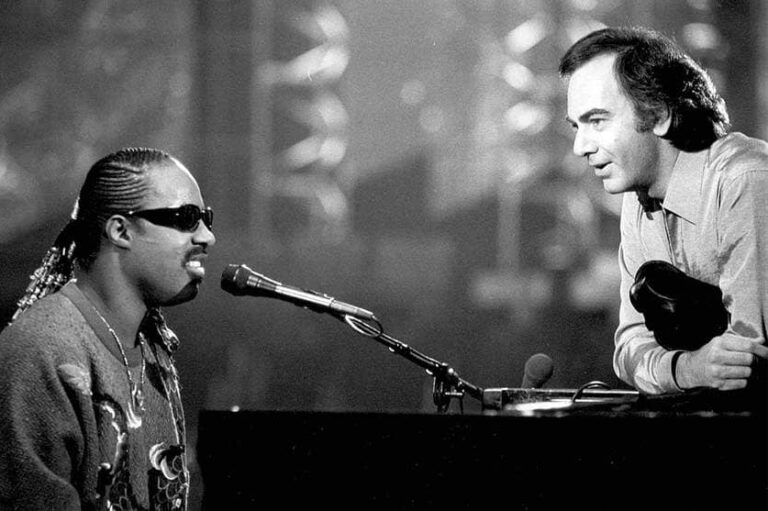
Why the ‘Sweet Caroline’ Singer Had to Retire the Mic










